- BOAT OF THE YEAR
- Newsletters
- Sailboat Reviews
- Boating Safety
- Sailing Totem
- Charter Resources
- Destinations
- Galley Recipes
- Living Aboard
- Sails and Rigging
- Maintenance


Aging Power Plants: Rebuild or Repower?
- By Tim Murphy
- Updated: October 22, 2012
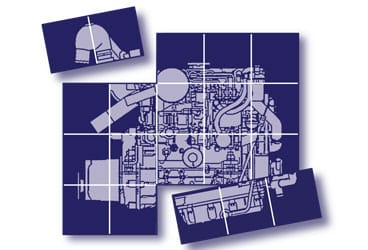
Many sailboats built two decades ago or earlier still have plenty of life left in them. But their engines may not. Grey Marine, Palmer, Perkins, Buhk, Universal, Pathfinder, Faryman—these once-common names in marine propulsion are all but gone from newer boats. Many of these engines were designed as truck or tractor motors, then retrofitted for marine use. The question facing you now is: Should you rebuild the existing engine? Or repower with a brand-new engine?
Let’s start with the cost of repowering. “You’re talking probably between $12K and $16K for a 30-footer, and $18K to $22K for a 40- to 45-footer,” says Mike Muessel of Oldport Marine, in Newport, Rhode Island, who’s repowered dozens of boats.
Expensive? Yes. But before you dismiss that option, first account for the real costs of a rebuild. “When people talk about rebuilding an engine, they usually mean rebuilding the internals—new pistons and rings and so forth,” says Muessel. Too often, he says, they forget to tally the cost of all the auxiliary parts: the starter ($400 to $800), alternator ($400 to $800), heat exchanger ($1,200), and saltwater pump ($500). Add a wiring harness, engine gauges, switch panel, transmission, and injection pump, plus labor, and the costs of a rebuild start to compete. It’s not uncommon, Muessel says, to spend 60 percent of the cost of repowering on a rebuild. And you’re still left with an older engine that’s long out of warranty.
If you’re shopping for an older boat, take a good mechanic with you on the sea trial and get a thorough assessment of the engine’s condition. With that firsthand information, factor the real costs of a dependable power plant into your final negotiations for the boat.
- More: boat buyer's guide , boat maintenance , DIY Sailboat Projects , How To , Sailboats , seamanship , ship's systems , systems
- More Sailboats

Sailboat Review: Jeanneau Yachts 55
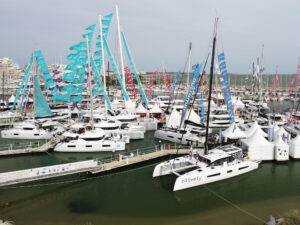
Modern Multihulls: The Future’s Electric

A Gem in New England

Thinking of a Shift to Power?

A Big, New World

Cruising World On Board: Windelo 50

Into the Mystic: A Pacific Northwest Adventure

How to Ride a Wave
- Digital Edition
- Customer Service
- Privacy Policy
- Email Newsletters
- Cruising World
- Sailing World
- Salt Water Sportsman
- Sport Fishing
- Wakeboarding
- 2024 BOAT BUYERS GUIDE
- Email Newsletters
- Boat of the Year
- 2024 Freshwater Boat and Gear Buyers Guide
- 2024 Boat Buyers Guide
- 2024 Water Sports Boat Buyers Guide
- 2024 Pontoon Boat Buyers Guide
- Cruising Boats
- Pontoon Boats
- Fishing Boats
- Personal Watercraft
- Water Sports
- Boat Walkthroughs
- What To Look For
- Watersports Favorites Spring 2022
- Boating Lab
- Boating Safety

Things to Consider When Repowering With Electric Motors
- By Capt. Vincent Daniello
- August 7, 2023
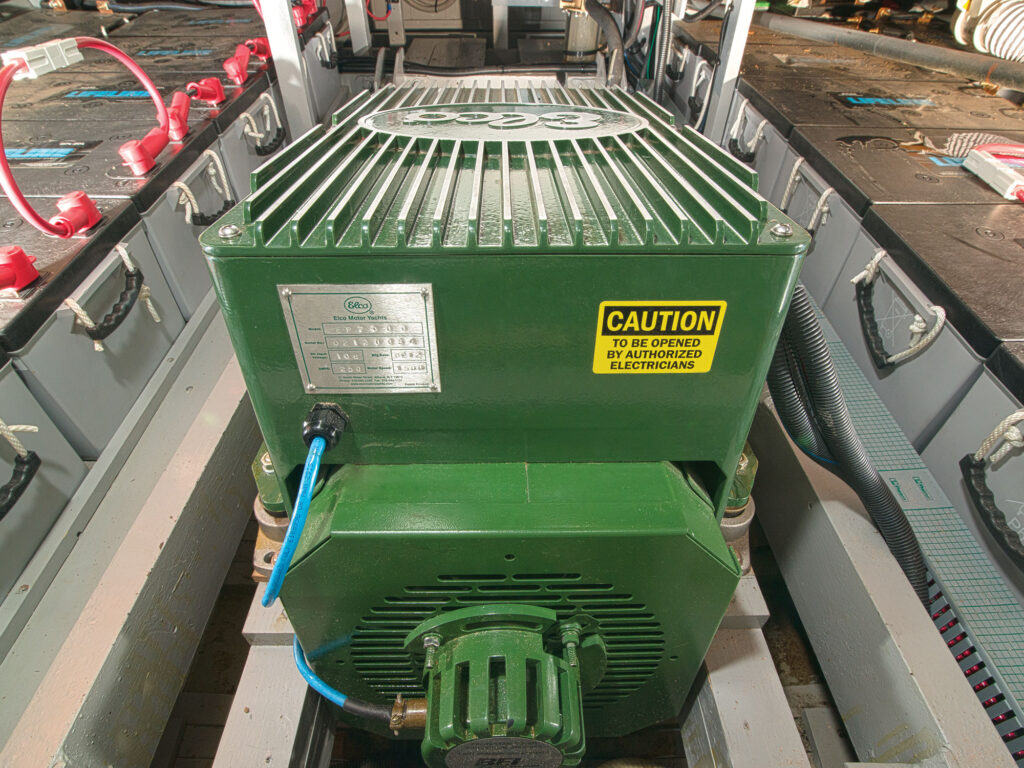
Much reporting focuses on reasons why one might choose electric marine power. The issues of range, speed, noise levels, winterizing and ethanol challenges, lake restrictions, environmental concerns and more all must be resolved on an individual basis. Little gets said about how a boater choosing to repower with electric actually gets that accomplished. Is it DIY? And if not, how does it get done?
Are you considering repowering with electric? Here’s a look at what it takes to cut the fuel line and plug in.
How Fast, How Far and How Long?
Electric propulsion can provide speed, range and runtime, but not all at once. An electric boat, motor and battery combination might top 25 mph for an hour. The same boat can also travel more than 50 miles at 6 mph, or longer still at slower speed. That makes the first step in going electric determining how far, in miles, you want to go fast, and how long, in hours, you need to go slow. Then match a motor and batteries to suit.
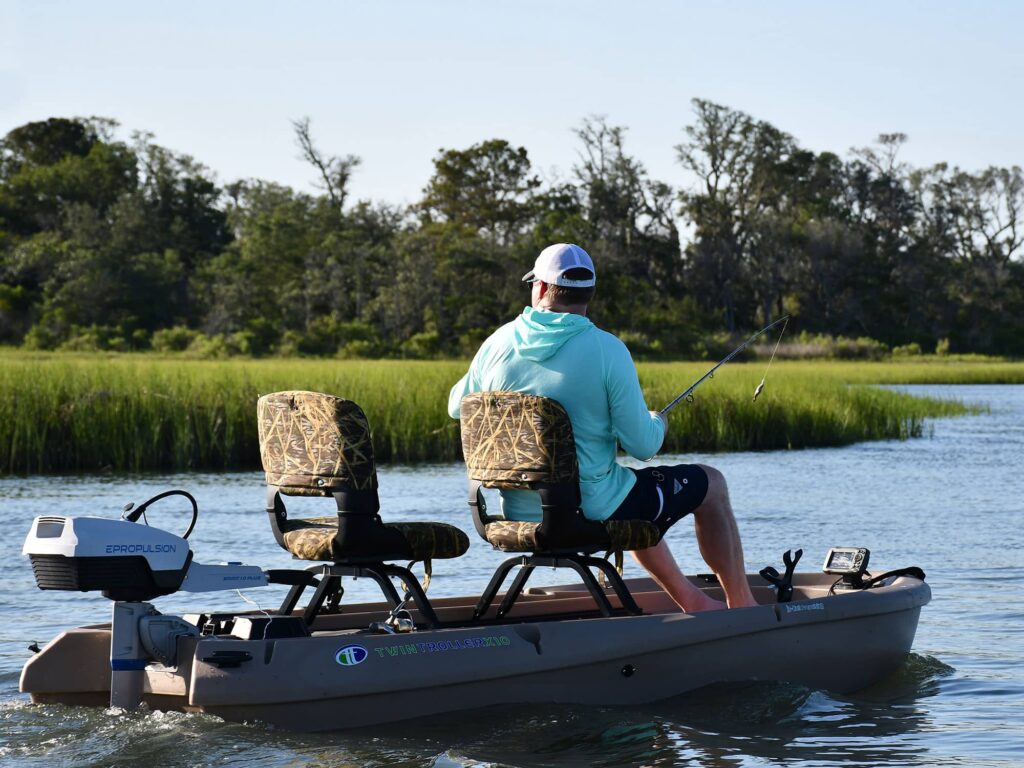
Portable Propulsion (DIY)
For small boats pushed to modest speeds, small, light options from ePropulsion , Torqeedo and Elco —equivalent to 3 hp gas outboards—easily clamp onto a transom yet store within a lazarette without worry of spilled gas. Most go for about an hour at full throttle, or 90 minutes at cruising speed, from one integrated or small external battery. These range from $2,500 to $3,500 for the motor, battery and charger.
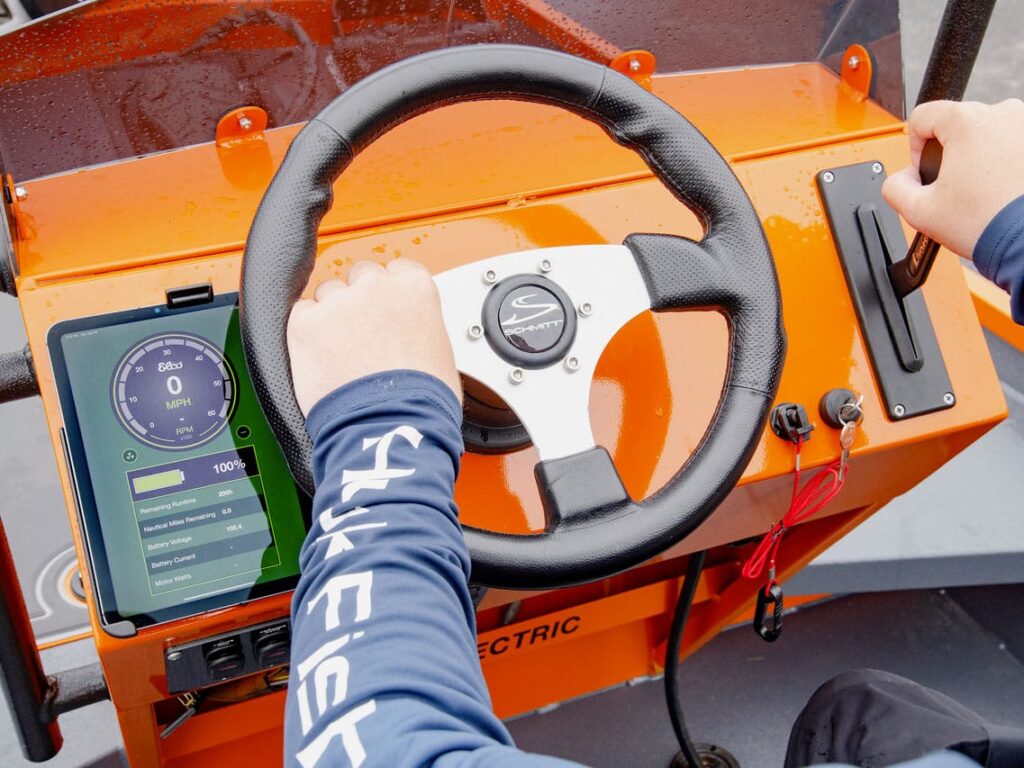
Hardwired Horsepower (DIY or Dealer)
Elco, Torqeedo, ePropulsion and Flux offer motors equivalent to gas outboards from 5 hp to 25 hp. These typically connect to fixed battery banks mounted aboard. Most companies offer self-installation packages that call upon basic mechanical skills. All facilitate turnkey installation through dealer networks. Flux eliminates DIY installation, partly because its outboards utilize higher voltages than others in this horsepower range.
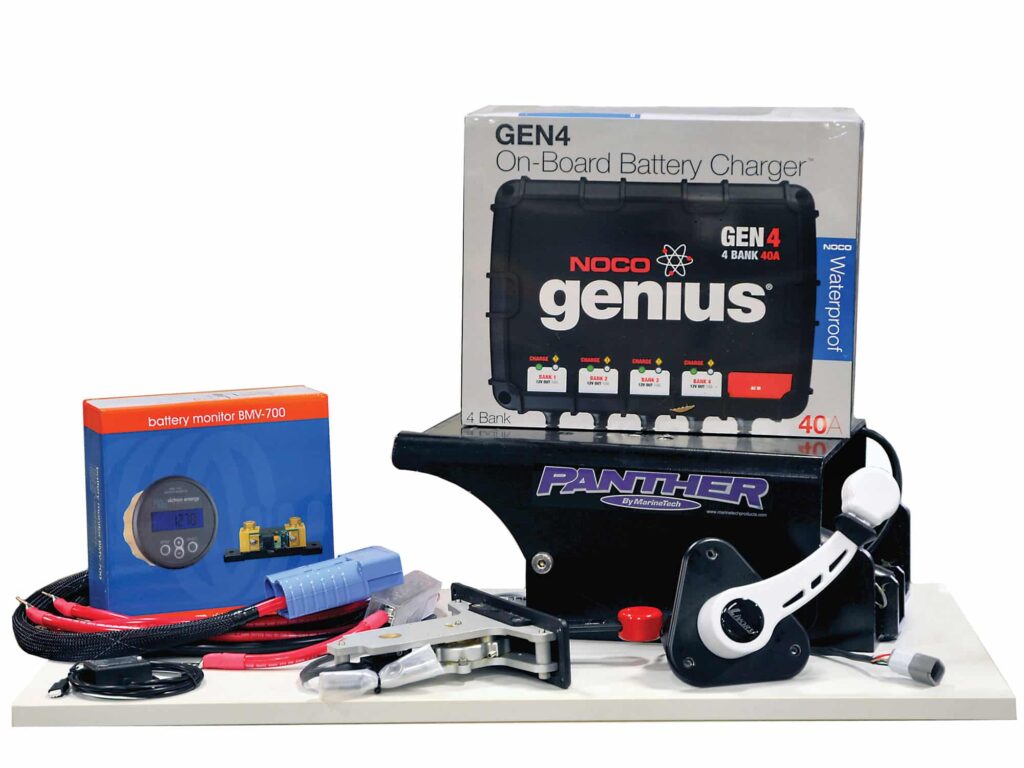
These midsize motors tend to work best for bigger boats at slower speeds. Elco, for example, says its EP-20 can push a 24-foot pontoon boat about 8 mph for two hours, while the same charge provides more than 10 hours of battery life at 5 mph; the cost is around $11,500. Just be sure to choose adequate power to dock in a breeze and then back off the throttle to extend range.
Planing Power (Dealer, Some DIY)
Elco, Torqeedo and Flux offer motors comparable to ICE outboards from 30 hp through 100 hp. Most utilize twice the operating volts compared to companies’ smaller outboards, with those added volts providing more short-term power, which is needed for the few high-load moments while boats climb fully onto plane. Only Elco facilitates DIY installation within this power range, even offering pre-made cables, equipment and accessories. The complete package propelling Rock Proof’s ePro 1760R , a boat we tested in Boating ’s March 2023 issue, utilizes Elco’s EP-50 and 20 kWh of lithium batteries; it sells for about $22,500.
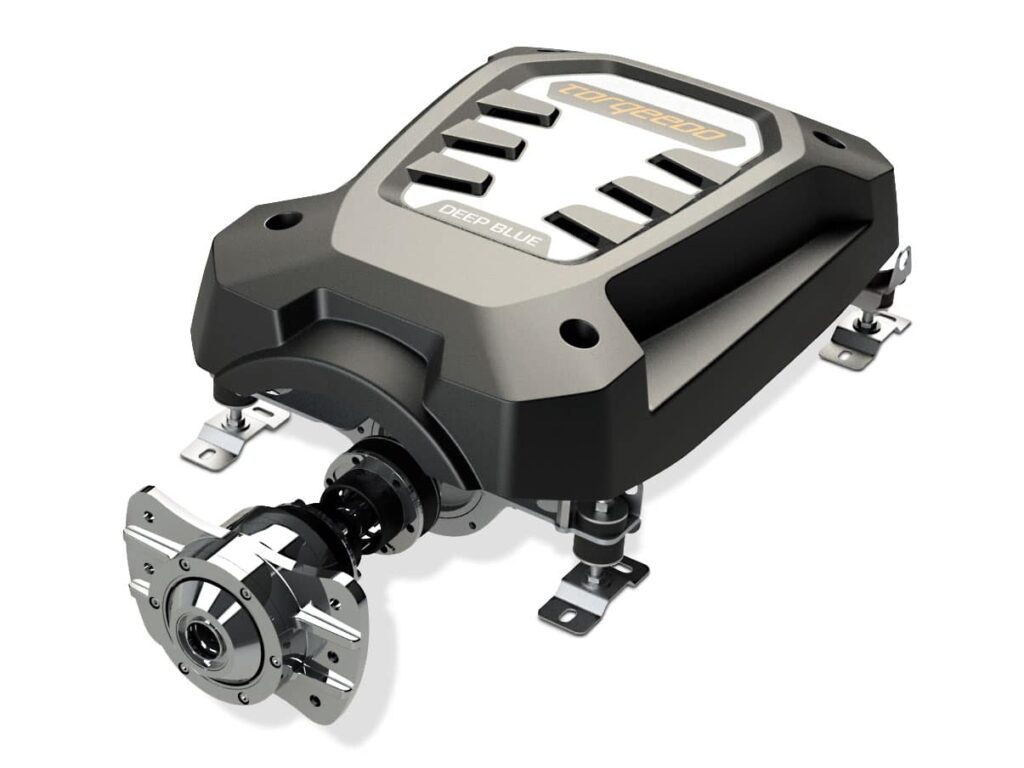
Inboard Options (Dealer, Some DIY)
While Elco has offered modern electric-propelled launches since 1987 and inboard repower options since 2009, its newest inboard motors are one-third smaller and half the weight of previous models, illustrating industry trends. Torqeedo and, recently, ePropulsion also offer powerful, light inboard motors for either repower or OEM installation. Most are intended to operate at modest speed, although Torqeedo offers three models operating at higher rpm for planing boats—its largest replaces 135 hp ICE engines while weighing one-third of a comparable ICE inboard motor and transmission (195 pounds plus batteries versus 567 pounds for a 135 hp MerCruiser 3.0 bobtail). A complete system with batteries that can run 50 minutes at full throttle costs about $120,000.
Read Next: Going Electric to Repower an Antique Boat
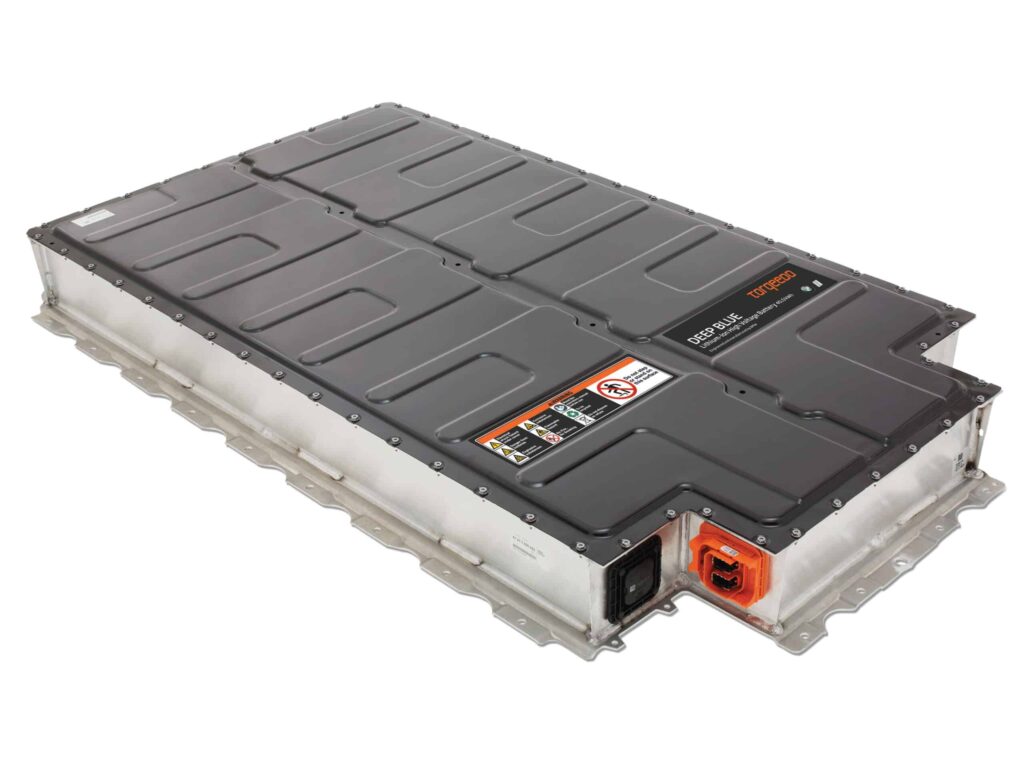
Electric motors ranging from 5 hp to 25 hp typically operate at 24 or 48 volts. This provides the broadest battery choices to balance size, weight, range and cost. All Elco and many Torqeedo motors accommodate any brand or battery type that meets specifications, adding flexibility. Absorbed glass mat (AGM) batteries , for instance, save considerable dollars compared to lithium for slow-speed boats. Larger motors, particularly when boats approach planing speed, require lithium batteries, which are half the weight yet provide higher continuous output compared to AGM.
- More: August/September 2023 , Boats , elco , electric boats , Engines , torqeedo
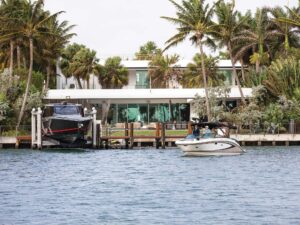
Conveniently Rent a Boat Using Boatsetter
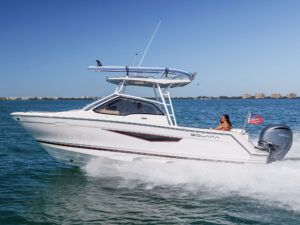
Boat Test: 2024 Solara S-250 DC
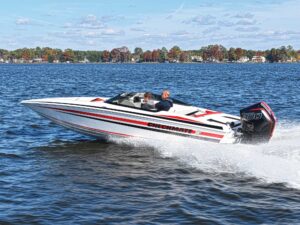
Boat Test: 2024 Checkmate Pulsare 2400 BRX
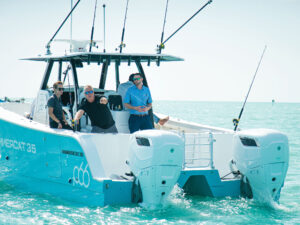
Cox 350 Diesel Outboard
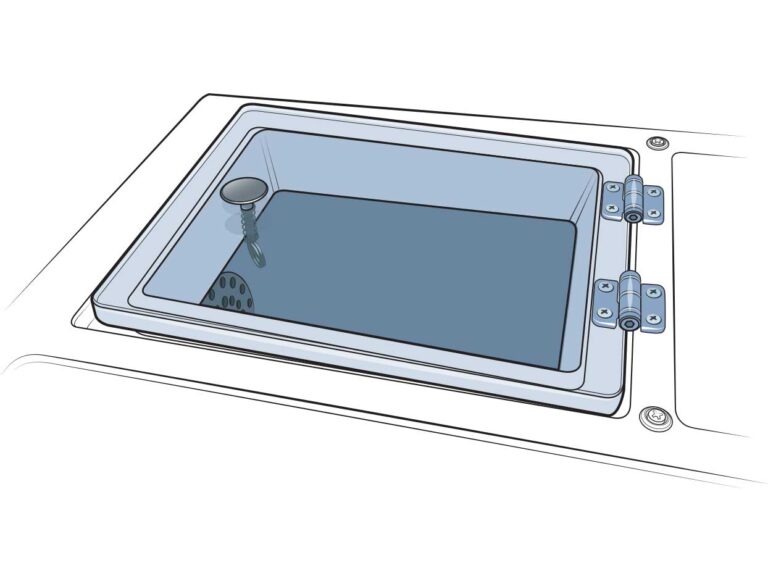
Installing Clear Acrylic Livewell Lids
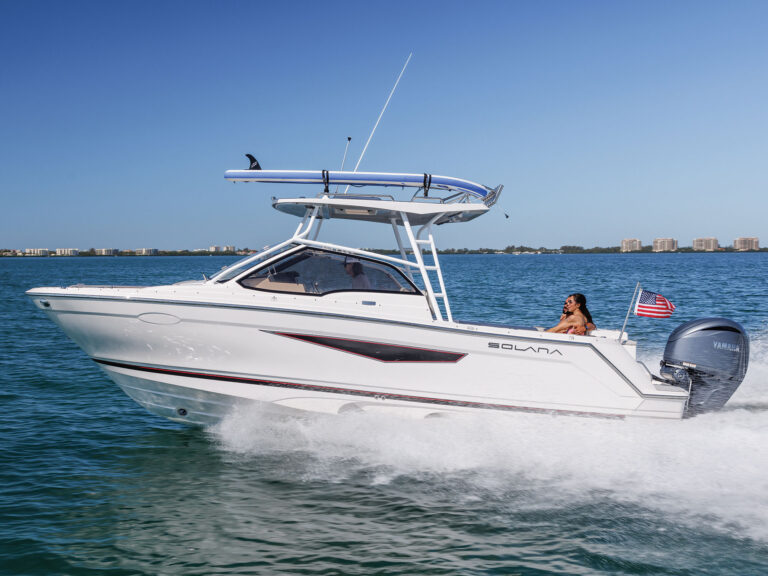
- Digital Edition
- Customer Service
- Privacy Policy
- Cruising World
- Sailing World
- Salt Water Sportsman
- Sport Fishing
- Wakeboarding
Many products featured on this site were editorially chosen. Boating may receive financial compensation for products purchased through this site.
Copyright © 2024 Boating Firecrown . All rights reserved. Reproduction in whole or in part without permission is prohibited.

Beta Marine Repower Center
Marine engines, whether or not they get a lot of use, wear down over time. They don’t run efficiently, they lose power, and they become a money drain. Replace your old, tired, outdated marine engine with a reliable Beta Marine diesel engine today. Use our resourceful Beta Marine repower center to find the right engine for your boat. There are lots of variables to consider when making a decision, such as the boat, engine bed, and how you plan to use the boat. Our consultants can help you make sense of all the variables. Choosing the correct engine to repower your sailboat depends upon several different criteria and we would always recommend that you discuss with other owners of your class of yacht as well as your local Beta Dealer or engine installer. Utilize the Beta Marine repower center to begin your search.
CONTACT A REPOWER CONSULTANT
Or call 252-249-2473
" * " indicates required fields

Repower Guide
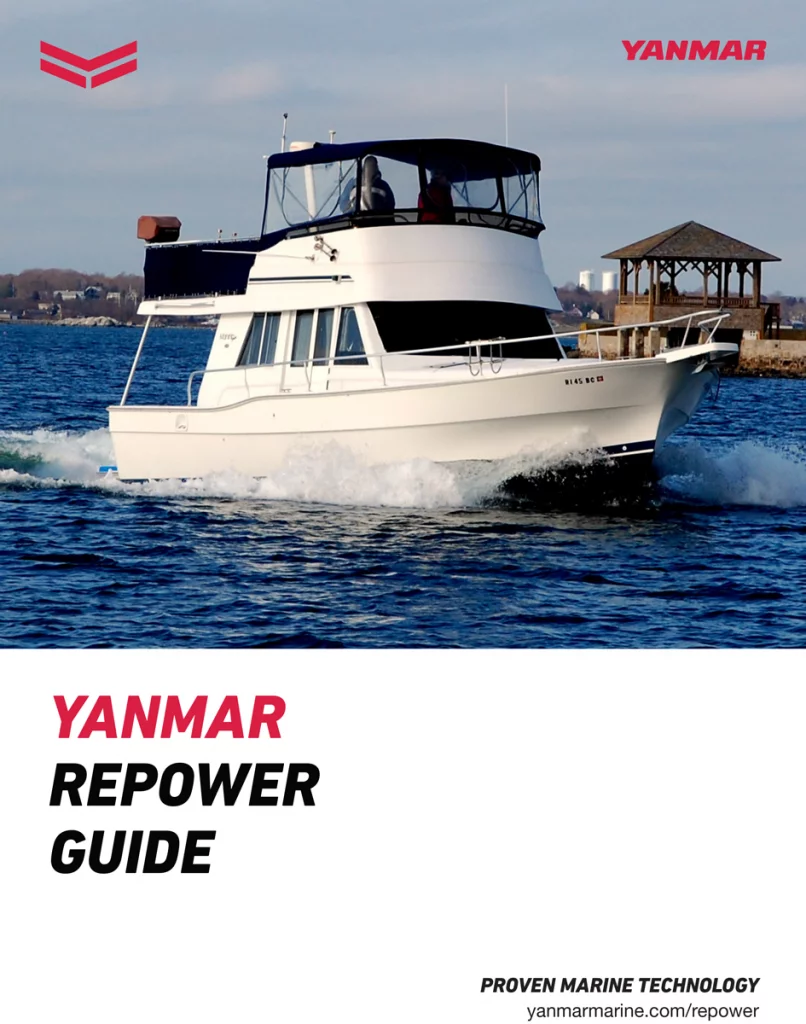
Download Our Repower Guide for FREE!
Repowering your boat is a major decision and there are several things to consider. We’ve collected some important information to help guide you through this decision and process. Connect with a certified YANMAR dealer or distributor when you are ready to make the next steps in your repower project.
Sign-up to receive the latest information from YMI about new products, services, and updates.
Dealer Locator
YANMAR’S extensive global service and parts network spans 130 countries and over 2100 locations.
We’re here to help and would love to hear from you. Contact us with inquiries, comments, and feedback.
Elige tu idioma
Choisissez votre langue, velg ditt språk.
Nederlandsk
Portugisisk
Välj ditt språk
Portugisiska

- Sails & Canvas
- Hull & Structure
- Maintenance
- Sailing Stories
- Sailing Tips
- Boat Reviews
- Book Reviews
- Boats for Sale
- Post a Boat for Sale
- The Dogwatch
- Subscriptions
- Back Issues
- Article Collections
- Free for Sailors
Select Page
Repowering, Part 1 – The Decisions
Posted by Don Launer | Engine , Projects

New engine or rebuild? And should you install it yourself?

On a cold February day, Don studies his engine replacement information. Delphinus rests outside awaiting her new engine.
Chances are your boat is like a member of the family. You could no more dispose of it than sell your only child. But, inevitably, the day arrives when you realize that your power plant is on its last legs, and there are some important decisions to be made.
Some boatowners go to the boatyard, write a check, and say effortlessly, “Call me when it’s ready.” For most of us, however, it’s a traumatic moment. After all, repowering an inboard auxiliary sailboat is a lot more involved than simply dropping a new outboard onto the transom.
For diesel engines, the symptoms begin to develop years before things become critical. Whereas your brand-new diesel would start within the first turn, now the cranking takes longer — and, if the weather is cold, much longer.
When Rudolf Diesel first patented his engine in 1892, it was a revolutionary idea. His engine used the principle of auto-ignition of the fuel. This idea, based on the work of English scientist Robert Boyle (1627-91), was that you could ignite the fuel from the heat produced by compressing the air in the cylinder. If this compression were great enough, the temperature in the cylinder could be raised enough to ignite the fuel-and-air mixture. In modern diesel engines, this compression ratio is between 14:1 and 25:1, which raises the temperature of the air in the cylinder to well above the burning point of the diesel oil that is injected into the cylinder (about 1,000 degrees F).
Compression, then, is the key to a successfully operating diesel. But when a diesel is up in years, cylinder walls and piston rings are worn and fouled with deposits, so they no longer make a good seal. Valves and valve-seats have also become pitted and fouled and don’t seal properly. Thus, it becomes much more difficult to get the compression necessary for ignition, especially when the engine block is very cold and rapidly saps away the heat of compression.
Biting the bullet

Discussing the proposed engine replacement with Tom Dittamo of Harbor Marine Engines.
When the day finally arrives for you to bite the bullet, there are two options: get the engine rebuilt or buy a new one. If the horsepower of the old engine was perfect, if it pushed you through heavy winds and waves when they were right on the nose, and if that engine has always been freshwater-cooled and has not had other serious problems, rebuilding that old engine might be more compelling. Certainly it would be less expensive.
But if your present engine is very old and has had raw saltwater cooling, chances are that having it rebuilt will not be practical. There will be rust, frozen bolts, parts to replace, and probably great difficulty in getting those parts. Even though the cost of rebuilding an old engine is typically about half that of a new engine, you may very well be throwing money away on a rebuilding venture. And if you have always felt that you could use just a few more horsepower to get you through those nasty conditions, now is a good time to upgrade.
Remember that when you decide to go with a new engine there are many more costs involved than just the price of the engine itself. Engines today, which provide the same horsepower as your old engine, are usually lighter and smaller and rotate at higher speeds.
These smaller dimensions in width, height, and length make it almost certain that your engine bed will have to be rebuilt to accommodate the smaller engine, since its mounts will probably be closer together.
It’s also important to know the type of transmission on your new engine. Basically, there are three different types:
- Parallel is a transmission whose propeller-shaft coupler is in line with, or parallel to, the engine’s crankshaft.
- Angle-Drive is a transmission whose coupler is at a downward angle to the crankshaft.
- V-Drive is a version in which the transmission is forward of the engine and makes a V-turn to drive a propeller shaft leading aft.

The new Yanmar 3GM30F is delivered early, which gives Don adequate time in which to measure it and familiarize himself with it.
Each of these configurations presents its own problems when rebuilding the engine bed. The smaller fore-and-aft dimensions will probably also mean that you’ll need a new and longer prop shaft unless you can set the new engine farther aft on the beds. Having a new shaft is probably a good idea anyway. After the old engine has been removed and the old shaft has been slid out of its stuffing box, you’ll probably see rings of wear in the shaft where the stuffing box (and sediment) have created grooves. If your old shaft is more than a decade old, you’ll probably find that the flange coupling is so frozen onto the shaft with rust that it’s impossible to free it without further ruining the shaft.
Also, if you didn’t previously have a flexible coupling or Drivesaver, now is a good time to add this item, which will help protect your new transmission in the event of the propeller picking up a piece of wood or a heavy line. If you’re already using a flexible coupling between the engine and the shaft, chances are that the bolt holes in this flexible coupling or Drivesaver will not match your new engine’s coupler, and a new, matching, flexible coupling will have to be purchased.
As for the propeller, there’s a 50-50 chance that the new engine may rotate in the opposite direction from the old engine. (If your present engine turns the prop shaft counterclockwise in forward gear, as seen from the stern, you now have a left-hand prop. If the new engine has a clockwise rotation, you need a new prop.)
Even if the direction of rotation of the new and old engines is the same, chances are that the engine speed, the horsepower, and the transmission gear ratio of the new engine will be different from the old. This will probably mean a new propeller of different pitch, diameter, or number of blades, making your old prop obsolete.
Free consultation

Before and after: preparations for the installation of a smaller Beta Marine engine in a C&C 30 required a new engine bed and oil drip pan to be constructed. This boat began life with an Atomic 4 which was later replaced by a Bukh and finally the Beta.
Most engine installation manuals give charts showing the recommended prop for your particular displacement and hull configuration, and most propeller manufacturers provide a free consultation service to determine the type of new prop you’ll need when repowering. Michigan Propellers, for instance, has a Pleasure Boat Prop-it-Right Analysis Form, which will suggest the correct propeller for your new engine.

On some boats, the engine and propeller shaft are deliberately installed at a slight angle off the fore-and-aft centerline of the boat. This may have been done to offset the tendency of a single engine to push the stern to one side or the other or to allow the shaft and prop to be removed without removing the rudder. If your boat has an offset driveshaft, repowering with an engine whose shaft rotates in the same direction as the old engine may be preferable. ( We have an offset shaft on our C&C 30. We repowered with opposite rotation and are satisfied with the outcome. It seems like this should have mattered more than it did. —Ed. )
The smaller proportions of a new engine and the rebuilding of the engine bed will also mean that your present oil drip pan beneath the engine will no longer fit, and a new pan will have to be fabricated and installed.
There is one complication of a physically smaller engine that may be overlooked. If you’ll be using your engine to supply hot water through a heat exchanger, the water connections on the new engine might well be lower than on the previous engine. If the heat-exchanger water lines from the engine to the hot water tank slope upward, an air-lock can develop in the heat-exchanger coil in the hot water tank that will prevent water flow and, consequently, heat exchange. One way to overcome this problem is by installing an expansion tank at the highest point in the water lines at the hot water tank. The pressure cap on this tank should match that of the one on the engine, and filling the water system can be done through the filler cap of the new tank.
Fuel-return line
With diesel engines there’s another thing to consider. Some diesels had just one fuel line going from the tank to the engine. Most modern diesels, however, also require a fuel-return line from the engine to the tank (often called the overflow fuel line). Depending on an engine’s design, the amount of fuel returned to the tank via this line can vary greatly.
If you had an engine with a single fuel line, the chances are that you don’t have a fitting on top of the fuel tank(s) for this new fuel-return line. This problem can usually be solved by removing the current air-vent fitting at the top of the fuel tank and substituting a T-fitting. One side of this T can then still be used for the air vent while the other side can be used for the fuel-return line. This problem also will be encountered when changing from a gasoline engine to diesel.
It’s also likely that with a new engine, the water, fuel, and exhaust systems may have to be rebuilt or re-sized. Even if this isn’t the case, when the old engine is removed is a good time to replace those old hoses.
If you are considering selling your boat within the next few years, it might be tempting to believe the value will increase enough to offset the money you have put into a new engine and its installation. But although a boat will be worth more with a new engine, the increase in value will probably not equal your investment when you sell your boat. The same caveat is true if you convert from gas to diesel. But here we are discussing repowering your boat because you want to use it for many more years, not with the idea of selling it.
Do it yourself?
Most owners will hand over the repowering project to a knowledgeable, qualified, and reputable installer. Still, it’s valuable to know the potential problems along the way. If you have decided to have the job done professionally, there are several preliminary steps to take:
- Only accept bids from installers who have actually examined your boat.
- Consider the reputation of the installer and the yard.
- Ask whether they have installed this type of engine before.
- Ask for references from owners of boats similar to yours who have had the same job done.
- Make sure that all associated work is specified on the proposal.
- Be sure that the final installation will conform to American Boat and Yacht Council (ABYC) standards.
Some boatowners will want to tackle the job themselves. If you do your own installation, there are much greater benefits than saving money. You will end up with an intimate knowledge of your new installation. This, alone, is a great incentive.
If you decide to do the job yourself, it’s still a good idea to have a professional in your corner, someone who is a dealer for your new engine or who has done engine installations, and whom you can trust, talk to, and order parts from. If you’re doing your own work, the closer the yard is to your home, the better. And if you don’t want to tackle the whole job yourself, you may elect to do just the engine rewiring, the exhaust system, the water system, or the fuel system, after the new engine has been installed on its bed and aligned.
Whether you do it yourself or have the engine installed by a professional, the job requires engineering judgment and good mechanical skills.
We were fortunate that for years there was an engine mechanic near us who would give us excellent and detailed advice whenever we had a do-it-yourself engine job to tackle. Tom Dittamo, owner of Harbor Marine Engines, in Lanoka Harbor, N.J., has his business in a marina less than 15 minutes from our home. Tom is also a Yanmar dealer, so we chose that yard, Laurel Harbor Marina, in Lanoka Harbor, for our haulout and engine replacement.
We bought our new engine from Tom six months before beginning our project. He stored it in his shop at the marina during this time, which allowed me to go in for all the necessary measurements whenever I needed to. This enabled us to plan well ahead for our project and purchase all the ancillary gear necessary. (This early engine purchase, which was suggested by Tom, also saved us 5 percent on the manufacturer’s price increase that went into effect shortly after we ordered the engine).
Start early

Replacing an engine often means replacing the propeller as well. The C&C 30 gets a new right-hand Michigan Wheel 15 x 9 2-blade propeller. Later this was replaced by an Autoprop.
Changing inboard engines is not a simple project. If you are very adept at major projects, if you are a good mechanic, if you have lots of time and patience, and most of all if you enjoy working on boats and this type of challenge, then you should start doing your homework and putting together a loose-leaf notebook.
Begin buying the necessary parts months in advance. I started buying my conversion gear six months before the start of my project, and that was not too soon. I discovered that the delivery of a new prop would take six weeks and the longer prop shaft would take almost as long, even though it was always: “I’ll have it for you next week.”
It’s important to learn as much about your new engine as possible before you start the project. There are many engine distributors who offer one- or two-day seminars specifically targeted at owners of auxiliary engines. Mack Boring & Parts Company, which sells Yanmar engines and parts, has one- and two-day owner seminars on Yanmar engines that are invaluable. These classes are given at Mack Boring locations in Union, N.J., Wilmington, N.C., Middleborough, Mass., and Buffalo Grove, Ill. The classes cover the theory of operation, explain all the parts of your new engine, cover routine maintenance, and include a hands-on session that gives participants the opportunity to do routine maintenance on the engine they will actually own, including adjusting and bleeding it.
Incidentally, one item that is invaluable in setting up the placement of a new engine on the rebuilt bed is an engine jig, which can usually be rented from the engine distributor. The jig consists of light-weight metal framework that locates the proper position of the engine mounts and shaft alignment. It copies the exact size and angle of the real engine and can be aligned with the prop-shaft coupling, revealing whether there has to be any change made in the engine bed or mounts long before the engine is swung into position.
The alternative to the engine jig uses another type of alignment method that will be discussed further in Part 2 of this series, which will run in the November/December issue of Good Old Boat .
Installation manuals
Nearly all engine manufacturers have comprehensive installation manuals that are essential for the do-it-yourselfer. These manuals, which should be part of your repowering notebook, have step-by-step installation instructions, including alignment procedure; wiring diagrams; engine specifications, dimensions, shaft and prop recommendations; and fuel, water, and exhaust-hose requirements. It’s also a good idea to purchase a service manual for your engine. It will be a handy reference for the future, and it gives some installation information that isn’t necessarily shown in the installation manual.
New engines come with their own instrument panels. If you have an instrument panel recess in your cockpit, especially one that is molded into a fiberglass boat, make sure that the new engine’s instrument panel will fit into the old recess. If it won’t, it might be tempting to try to use the old panel with the new engine, but this usually is asking for a lot of headaches, including replacing the tachometer, oil and temperature gauges, and wiring. Some manufacturers have several panel options of different sizes. Yanmar, in their GM series for auxiliaries, have three control panels of varying sizes and options.
Repowering a boat from a gasoline engine to diesel power needs extra consideration. Diesel engines of equivalent horsepower are usually physically larger than their gasoline counterparts. You may find, however, that the Atomic 4 in your boat has much more horsepower than the diesel you will replace it with. Many smaller boats were powered with an A4 and a direct-drive transmission. Only half the engine speed range, and thus roughly half the horsepower, was used. These direct-drive boats were equipped with very small props.
Bed modification

Out with the old (Volvo)
Even if you’re sure an appropriate diesel will fit in the engine compartment, you’ll probably need to rebuild or modify the engine bed. Consider the maximum-diameter prop that can be fitted to your boat and still have the required tip clearance. Match this against the prop that the new engine will need. Not all gasoline tanks and fuel lines are compatible with diesel fuel and, as mentioned previously, a fuel-return line will also have to be added. The primary water-separator/ fuel filter will also need to be replaced. In some cases, the prop shaft may have to be increased in size which, in turn, means a new stuffing box.

In with the new (Yanmar)
Most of us have a pretty good idea how much power we need, based on the performance of our previous engine. The old rule-of-thumb for auxiliaries of 2 hp for every 1,000 pounds of displacement is usually pretty good. If you really want to get into the calculations, then consult Dave Gerr’s Propeller Handbook or Francis Kinney’s Skene’s Elements of Yacht Design. Another source of information is at http://www.boat diesel.com on the web. This site, which provides a wealth of information on diesels, charges a $25 membership fee. If you click on Propeller/Power/ Shaft Calculations, you can find the proper shaft size, the power required for a given hull, and the recommended propeller specifications.
Be sure to check the alternator options available for your new engine. If your electrical consumption is high, as is the case with a refrigeration system or a watermaker, be sure to specify the appropriate alternator when you order the new power plant.
Engines for an auxiliary must, above all else, be reliable. When selecting the manufacturer of your new engine, do your homework. Talk to other sailors who have had an engine replacement recently and get their opinions. Get information from various engine companies and local marine mechanics, check out these engines at boat shows, and talk to the manufacturers’ reps.
When you’re finally back in the water with a new engine, you’ll feel much more inclined to take that long cruise you’ve been delaying for years, safe in the knowledge that you have a new power plant of high reliability for which parts are readily available.
Article taken from Good Old Boat magazine: Volume 5, Number 5, September/October 2002.
Part 2 of Don’s repowering series , with a focus on installation, will appear in the November/December 2002 issue of Good Old Boat .
Back To Top
American Boat and Yacht Council (ABYC) 410-956-1050 http://www.abycinc.org
Beta Marine 252-249-2473 http://www.betamarinenc.com
BoatDiesel http://www.boatdiesel.com
Harbor Marine Engines Laurel Harbor Marina 609-971-5797
Mack Boring 908-964-0700 http://www.mackboring.com
Michigan Wheel Corporation 616-452-6941 http://www.miwheel.com
Perkins-Sabre 253-854-0505 http://www.perkins-sabre.com
Vetus 410-712-0740 http://www.vetus.com
Volvo Penta of the Americas Inc. 757-436-2800 http://www.penta.volvo.se
Westerbeke Corporation / Universal 508-823-7677 http://www.westerbeke.com
Yanmar America Corp. 847-541-1900 http://www.yanmar.com
Propeller Handbook , by Dave Gerr Ask BookMark 763-420-8923 Good Old Boat Bookshelf
Part 2 of repowering article
About The Author

Don lives on a waterway off Barnegat Bay, on the New Jersey coast. He keeps his schooner, Delphinus, at dockside next to his home. Although Barnegat Bay and the adjacent waterways frequently freeze solid, his boat has wintered in unfrozen water for the past 21 years, protected by a water-agitation system and an electric engine-compartment heater.
Related Posts
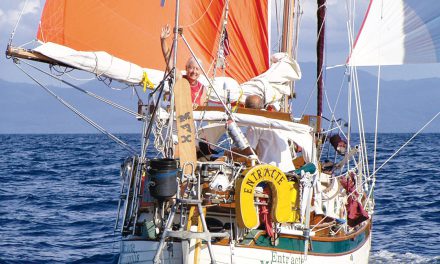
Staying Power – Adding an Inner Forestay
January 1, 2020
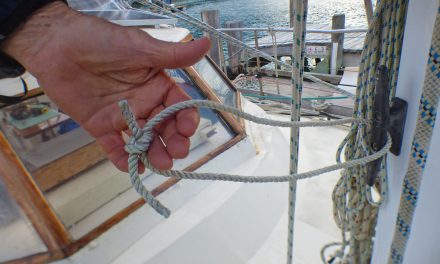
Getting Loopy
October 4, 2022
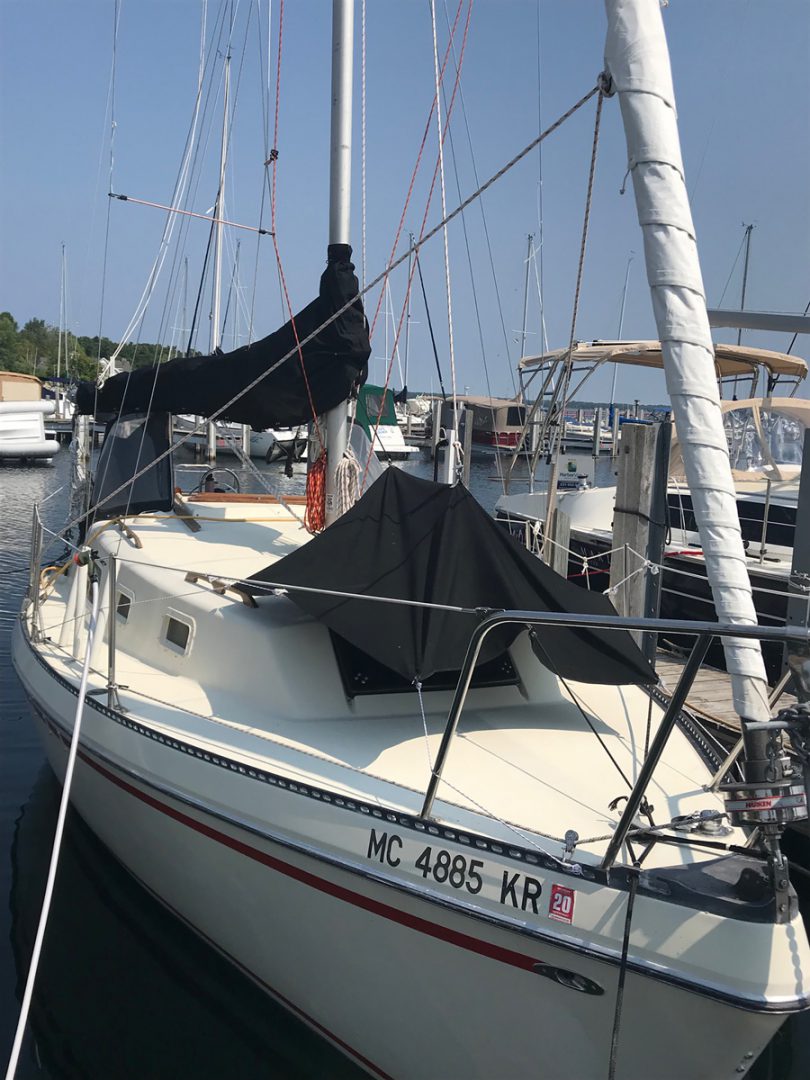
Open Hatches in the Rain
November 1, 2018
A New Stern Tube
January 1, 2003
Current Edition
Join Our Mailing List
Get the best sailing news, boat project how-tos and more delivered to your inbox.
You have Successfully Subscribed!

- Forums New posts Unanswered threads Register Top Posts Email
- What's new New posts New Posts (legacy) Latest activity New media
- Media New media New comments
- Boat Info Downloads Weekly Quiz Topic FAQ 10000boatnames.com
- Classifieds Sell Your Boat Used Gear for Sale
- Parts General Marine Parts Hunter Beneteau Catalina MacGregor Oday
- Help Terms of Use Monday Mail Subscribe Monday Mail Unsubscribe

Catalina 30 -repower options
- Thread starter Don
- Start date Jun 29, 2001
- Catalina Owner Forums
- Ask A Catalina Owner
My Universal 5411 is dead - I need to repower my 1983 Catalina 30. I am looking for options. I have been told that a new engine installed is around 11K. Does this sound about right? I hate to spend that much on an older baot. Has anyone ever repowered a 30 with one of those new 4-stroke outboards? I was thinking it may be a bit funky, but alot less expensive. I know- it would screw up my resale, but I anot really concerned about that at this point. Any ideas? Thanks
How about the A-4? About half the price, and very dependable! Best Regards, Rob
John A. Visser
What do you mean by "dead?" I imagine that unless the block and head are cracked, you could get your motor rebuilt, or exchange for a remanufactured motor, for much less than the outright purchase of a new one. And, if my memory serves, you can buy a new twin cylinder diesel of about 12 HP for less than half of $11k, perhaps less than $4k (5411 is twin of 11 HP). I would discourage strongly going to a gas motor like the A4 for a couple of reasons: 1. gas is inherently more dangerous than fuel oil. 2. you already have the diesel fuel tank and plumbing and filter system. 3. all other things being equal, the boat with the gas engine is worth less than the boat with the diesel. For such a small engine, I recommend a reman witha core swap and swap it yourself. jv
Oh man.. Not this discussion again.... John, I have to disagree with you about A-4's. They are not dangerous, as their numbers and service histories will tell you. Easily serviced and properly maintained - they will last quite a while. While gasoline is more flammable than diesel, it is not necessarily more dangerous. Bottom line: my 1979 A-4 still runs like a top, and I don't need to replace it, do I? The fact that the diesel needs to be replaced and the gas engine doesn't speaks volumes. Best Regards, Rob
Jeff Walker
My neighbor uses an outboard His Yanmar finally died in his Cat 30 and he put a 15 horse Honda 4 stroke mounted on a bracket. He made a couple of mistakes. The engine should have been a long shaft because the engine comes out of the water and races in any kind of rough seas. The positive side is his boat sure is quiet now and the engine does a good job moving the boat in calm water. Also consider that the new 4 strokes are much heavier than their 2 stroke counterparts and the bracket must be made adjustable with a block and tackle or some other mechanical system. I would look for a used, re-built inboard if it was me but I can see how an outboard would work. Good luck, Jeff
To Rob RIch - It's the FUEL,, ... Rob, Please re-read my response. I was careful in stating it was the fuel that was dangerous, no thte A4. Your comment "While gasoline is more flammable than diesel, it is not necessarily more dangerous" is utter nonsense. Check the Coast Gaurd regulaitons regarding gas v. diesel installations. Your further comments: "Bottom line: my 1979 A-4 still runs like a top, and I don't need to replace it, do I? The fact that the diesel needs to be replaced and the gas engine doesn't speaks volumes" are also nonsense, in that they are anecdotal. Please read carefully and get it straight before refuting someone else's reply, at least out of courtesy.
Mr Visser, please read more carefully.... Mr. Visser, I seem to have offended you. If so, that was not my intention. However, before hit the poison pen too hard, I suggest you re-read my post. It was written in a light tone - not a viscious one. My post reads verbatim: "While gasoline is more flammable than diesel, it is not necessarily more dangerous." What this means is that with proper handling, gasoline should be no more dangerous than diesel. Proper use of the blower (run 3 to 5 minutes), proper inspection of the fuel system on a regular basis (good PM), and general use of the old sniffer will see you safely to your next port. As for anecdotal evidence, yes, it was... and intended to be so. Holding a masters in journalism has taught me not to communicate erroneous facts or statistics. All I said is that it "speaks volumes." And it does, especially when it comes to conventional wisdom, which at best is not all that conventional when you think about it. So, I hope you understand my angle and my post. I may not agree with what you say, but I will always defend your right to say it, and post a response to my response. That is why this website is here, and I wouldn't want it any other way. Best Regards, Rob Rich
John Visser
Bottom line Regardless of the arguement, my choice for inboard auxiliary power is diesel, for reasons of safety related to the fuel. jv
Larry Watkins
C-30 repower Don; Don't stick an outboard on your transom, you'll look like an ignorant goof and other sailors will laugh at you behind your back. It's almost as bad as leaving your fenders down. Bite the bullet and rebuild your 5411. If you do the labor yourself, the cost will be reasonable and you'll have the engine the boat was designed to use.
Larry is right...I saw a Newport 28 with a .... longshaft outboard and sailed over to investigate. The diesel had locked up and the owner added the 15hp outboard and hates it. Even in our relatively protected inland Florida waters, the outboard comes out of the water on all but the calmest days. He said it was a stupid idea and a total waste of money and effort and has killed the value of the boat. Maybe you can rebuild the 5411. Good Luck
Henry Weber
diesel rebuild Don About six months ago I rebuilt my Yanmar 12hp diesel. It was a fair amount of work but not too bad. This was a single cylinder. It cost about $900 which includes all parts from Yanmar, machining done in an engine shop, and removal/install. Labor was mine and is not included. (Replaced valves,seats,cylinder sleeve, piston, rings, all bearings, rod, oil pump. Crank and block and camshaft were ok.) Has been running like a new engine ever since. I have about 100hrs on her since rebuild. Good luck Henry
Jay Rickles
re engine Don't know about an outboard option, but I had to put a new engine in my 1989 Catalina 30. I had a Universal 23hp and the replacement was a Universal 27hp. I had to redo some of the exhaust fitings to the water lock as the engine as been redesigned as is usually the case on the older boats. I also added an extra alarm and warning light at the helm for the oil pressure and water temp. This engine cost me $5800 plus about an extra $1000 for parts to make it fit. I looked at a Yanmar, but it would have run $6800 for the engine and $2000 for the part to make the Yanmar fit. With all charges (pulling and checking on rebuilding the old engine) it came to about $11,000 as you have found. A lot of the labor comes from having to re-install and wire up the new engine..all the connections are different from the plug in your boat and it has to be wired up separately. I would be interested in what you find regarding an outboard, but you might want to check on what happens to your resale value if you do this...also, what do you do with the old engine. Good luck and happy sailing.
- This site uses cookies to help personalise content, tailor your experience and to keep you logged in if you register. By continuing to use this site, you are consenting to our use of cookies. Accept Learn more…
Repowering a Boat: What You Should Know
Does your boat engine need to be replaced? If so, you should review the pros, cons, costs, and considerations for repowering a boat. Stay tuned to discover everything you need to know!
What Does Repowering a Boat Entail?
So, what does repowering a boat mean? This term refers to replacing your old boat engine with a newer alternative. Doing so makes your vessel faster, more efficient, and less likely to break down.
Pros of Repowering a Boat
As mentioned, repowering your boat helps it run faster and more efficiently. In addition, here are some of the benefits:

1. Improve Performance
Replacing your old engine with a new one is a phenomenal way to maximize your boat’s overall performance. Generally, repowering a boat improves the power-to-weight ratio (making your boat easier to handle), maximizes speed and power, and offers a more enjoyable boating experience overall.
2. Extend the Boat’s Lifespan
A properly-maintained boat engine lasts many years – extending your time on the water. And not only do newer engines feature advanced technology and higher-quality parts, but they allow for longer service intervals. That means they require less maintenance.
Read Next: Boat Maintenance Guide
3. Increase Resale Value
Thinking about selling your boat? (Either sooner or later?) Because the value of your boat increases when you replace your old engine with a newer, more powerful one. Generally, buyers are more interested in purchasing modern, efficient, and dependable vessels.
4. Improve Fuel Economy
We probably don’t need to remind you that gas prices are increasing. However, newer engines allow you to spend less money on gas or fuel .
5. Better for the Environment
When repowering your boat, you can upgrade to an engine that uses less fuel and meets the current carbon pollution rules. Manufacturers make the newest machines to be as green as possible . And by reducing pollution, your boat becomes safer for the environment and the seas.
Read Next: Responsible Boating Guide
Cons of Boat Repowering
Naturally, there are two sides to every coin. Here are some drawbacks of repowering:
1. Boat Downtime Needed
Depending on the vessel’s size and the work’s complexity, the repowering process takes some time (several days or weeks.) Because you can’t operate your boat during that time, you must plan your schedule accordingly.
2. Compatibility
Believe it or not, certain engines aren’t compatible with certain types of boats. Therefore, you must verify that your fuel and exhaust systems, buttons, gauges, and electrical links work with the new engine. And note that the price might increase depending on any necessary changes.
3. Installation
Usually, you’ll need to hire professional marine technicians to handle a project of this size. They can verify that everything was done correctly and that the installation is successful. However, their expertise comes with a price, and hiring experts bumps the overall cost.
4. Repowering Costs
So, how much does it cost to repower a boat? Typically, upgrading your boat’s power source costs several thousand dollars. However, your exact price depends on factors like boat size, engine type, installation fees, boat modifications, and additional equipment.
Our advice? Do your research and collect quotes from multiple sources. That way, you can thoroughly assess your options and select the one that works best for you.
What to Consider:
Decided that it’s time to repower your boat? Before you do, there are a few considerations to keep in mind:
- Maintenance : There’s no getting around it – new engines require ongoing maintenance! When factoring this into your decision, consider the proximity of repair shops, what the warranty includes, and how easy it is to reach customer service.
- R egulations and emissions standards: Every boater must adhere to the local regulations and emissions standards. To avoid legal problems, your new engine must comply with laws regarding engine pollution, noise levels, and environmental concerns.
- Compatibility: It’s important to remember that certain engine types aren’t compatible with certain boat models. And just because someone suggests an engine model doesn’t mean it will automatically work for you.
The Bottom Line
The benefits far outweigh the cost of repowering your boat. And if you’ve decided to upgrade your boat’s power system, we hope this guide answers your questions.
On the Discover Boating Blog, you'll find boating advice, maintenance guides, and buying tips for both seasoned pros and first-time boaters. If you’re interested in learning how to care for your new boat engine, how to choose the right marine fuel and oil, or about the life expectancy of your boat engine , head to the Articles & Inspiration section of our website.
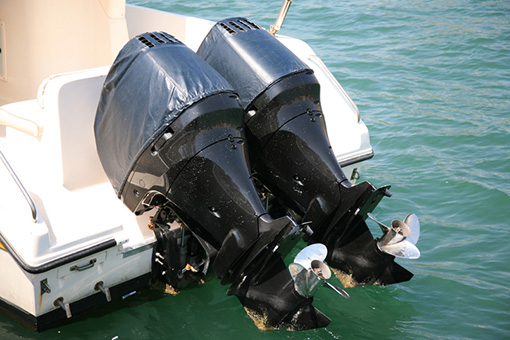
Join Our Newsletter!
Get community news, buying bargains, and how-to guides at your fingertips.
The Complete Guide to Repowering Your Boat

Quick Navigation:
What does repowering a boat mean, should i repower my boat, boat repower options and considerations, how to prep a boat to repower, how to repower a boat outboard, how long does it take to repower a boat, how often should i repower a boat, is it better to repower a boat or buy new.
If you're tempted to buy a new boat because you're interested in an upgrade, you're not alone. While new boats are exciting and fresh, they're expensive, and you may not have the budget for one at the moment. If your boat could use some updates and you want to avoid buying new, consider repowering. This approach can be a more cost-efficient way to keep your current boat yet add the necessary updates to keep it running smoothly.
Whether you're repowering a pontoon boat or a fishing boat, you'll want to read a bit about repowering before you proceed. Use our guide for help thinking about the various aspects of repowering your boat and whether it's the right choice for you.
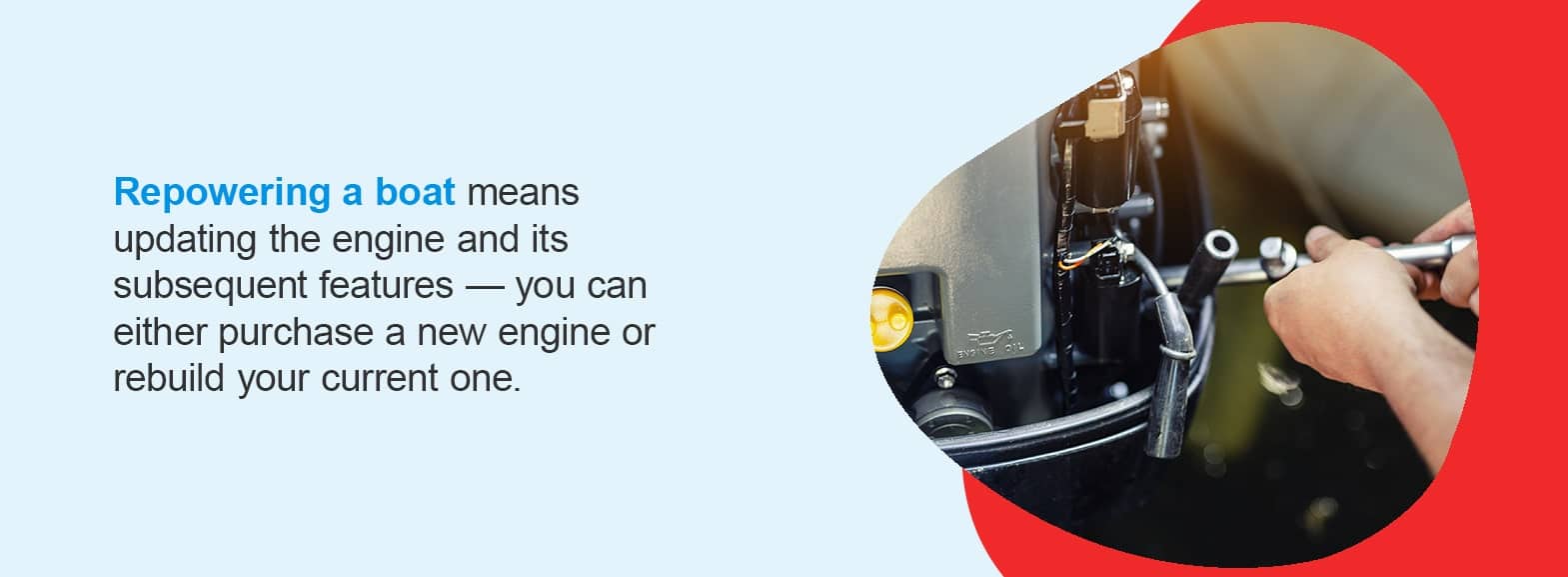
In short, repowering a boat means updating the engine and its subsequent features — you can either purchase a new engine or rebuild your current one. While the engine is certainly a large part of the process, the engine is usually connected to other features on your boat, like steering controls, gauges, fuel and battery systems and more. As a result, almost every function of your boat will feel upgraded.
The type of engine your boat has will partly determine how complex of a project you're taking on. If you're looking to repower a boat's outboard engine, the process will likely be quite simple because the engine is easy to access. If you want to repower an inboard boat, the engine is more difficult to access and is more likely to be connected to other parts of the boat, so the process becomes more complex.
If you're mechanically inclined, you may be able to do the repower yourself, though it's usually best to let professionals repower boat engines. With the proper tools and training, service professionals can ensure your boat gets repowered with less risk of damage.
While repowering older boats can end up being an in-depth project, it's a smart way to improve numerous functions and controls to keep your boat running longer for less money.

There are many reasons you might consider repowering your boat. If you need boating reasons to repower, consider how updating your engine can breathe new life into your boat. Doing so can make taking your boat out on the water a whole new experience, all without having to pay for an entirely new boat.
For many boat owners with aging boats, the body of the boat is still in good condition, but the engine may be racking up a substantial number of hours. When that happens, the engine is likely reaching the end of its life and is running inefficiently. A weak engine can cause the entire boat to run poorly.
When there's nothing wrong with the boat itself but the engine needs a reboot, it often makes sense to repower your boat rather than buy a new boat. If you're looking for more horsepower or better fuel efficiency, you should also consider how repowering can be more financially beneficial than buying new.
Learn About Boat Loans

Repowering your boat is an opportunity to make necessary changes, though not every change will be beneficial to the way your boat runs. Repowering a boat is more than just installing a new engine — there are numerous aspects and different options for each aspect that you should consider.
Here are some important considerations when choosing to repower your boat:
1. Horsepower
Many people want to upgrade their boat's horsepower when repowering. However, you should be cautious if this is something you're considering.
Boats have horsepower capacities, and exceeding them can cause serious damage to the entire boat. Be sure to check what your boat's maximum horsepower rating is before you proceed with a repower. The set horsepower is the horsepower you should keep in mind when repowering, regardless of what you had previously.
Your boat will perform best at its maximum horsepower rating because the engine won't be struggling. This aspect often also results in better fuel economy, too.
2. Engine Brands
The most significant part of repowering your boat is replacing the engine, so naturally, you may want to consider other brands than your current one. You'll likely want to find the best motor to repower older boats so you know it'll work well. Changing the engine brand can mean more work to complete the project, but if you're unhappy with the brand's performance, warranty or another aspect of the brand, it may make sense to switch brands.
Switching brands typically requires the boat to be re-rigged, which will require more of a financial investment on your part. However, re-rigging your boat with a different brand engine is an opportunity to replace outdated controls, which is something you may need to do anyway.
While it's not as common now, boat owners used to switch from gas to diesel because it was cheaper. If you're thinking about how to repower a boat to a diesel engine, it may be best to avoid doing so. Today, diesel engines aren't as cost-efficient.
Additionally, repowering to a diesel engine is quite a challenging task. Repowering to a diesel engine typically requires your entire boat's system to be reengineered, which means the cost might not make it a viable option. If you're wanting to go diesel, consider finding a new or used diesel boat for sale instead of trying to repower your current boat to be diesel.
3. Number of Outboards
If your boat uses an outboard engine, you may consider changing the number of outboards you use. This is another aspect of re-powering you should approach with caution.
If your boat currently uses two outboards, you may be able to switch to one large outboard rather than two smaller ones. When changing the number of outboards on your boat, it's important to consider the weight of the motors and the space two of them take up. You should look for a new outboard that offers similar or more power at a similar weight.
Switching from one outboard to two may not make as much sense, especially because many single outboards today can power your boat just as well or better than two do. Additionally, trying to put two outboards where there was only one can raise several issues. For example, two outboards may add too much weight to the boat, there may not be enough room or your boat may lack the necessary structural support.
4. Controls and Instruments
Repowering your boat is a great opportunity to get everything updated, especially the controls. Like we mentioned earlier, switching engine brands may require you to change your boat's controls, but doing so anyway can improve your boat's performance and your experience.
From the throttle and steering to the electrical harnesses and cables, updating your system will make your new engine more enjoyable. Also consider how digital instruments can provide more information than old gauges, like fuel consumption and efficiency.
5. Joysticks
If you're repowering a bass boat or other fishing boat, you might consider adding a joystick control. Joysticks enable you to maneuver your boat at slow speeds with more accuracy. This can be extremely beneficial when docking or making slight changes in direction while fishing.
However, there are a couple of important factors to consider before adding a joystick. For example, when adding to an existing engine system, joystick systems work better with two outboards rather than a single engine. Additionally, installing a joystick system can be costly, so you'll need to determine if you can afford it and whether it's worth the investment.
6. Fuel System Components
Installing new fuel system components is highly recommended when repowering an old boat. Replacing your fuel hoses ensures your boat has ethanol-resistant, Coast Guard-approved hoses. Checking fuel components regularly and replacing them as necessary is crucial to maintaining your boat's engine.
Additionally, be sure to install properly sized hoses and fittings if you upgraded the horsepower. Components that are too small can prevent fuel from getting to the engine, hindering performance and damaging it.
7. Battery Systems
Depending on the engine and features you want to add, your current battery system may not be capable of powering the entire system. For example, outboards with power steering may require more power than your old battery can handle. In some cases, you may be able to replace old battery cables that may be corroded. Doing so has the potential to improve the battery system.
While doing a repower yourself can be challenging, if it's an outboard, it may be relatively simple. Boats like pontoons and many fishing boats use outboards, so if you have an outboard, you could do it yourself as long as you have the proper tools and knowledge. Consider the following process to learn how to repower a pontoon boat with an outboard engine.
Remove the Engine

Preparing your boat for a repower requires removing your current engine. If you have any hesitations about being able to properly remove your engine, it's best to consult a mechanic to help you out. This way, you won't inadvertently cause damage to the engine throughout the process.
To start, you'll need to prepare the old engine and various cables and wiring. There can be a lot of value in these parts, so if you're planning on selling them, be sure to keep them in good condition and neatly organized. Potential buyers and parts-seekers will look for individual items and entire cable systems, so even if something doesn't work, keep the parts because someone may see value in them.
First, the control, battery and steering cables should be disconnected. If you're reusing the steering and battery cables, be sure to set them aside so they don't get mixed in with the for-sale items. Next, carefully take out the controls, gauges and wiring harnesses. To make installing new harnesses easier during the repower, tie pull-cords to the ends of the wiring harnesses.
To finish prepping the engine for removal, drain all of the engine fluids. Drain the oil and remove the oil filter. Remove any other fuel filters and remember to drain the fuel lines.
Prepare a Gantry

Another important aspect of preparation is preparing a gantry. Since most engines can easily weigh up to 500 pounds, you'll likely need a system for lifting the engine off the boat's transom.
A gantry is essentially a support frame you can use as a crane to lift the engine. If you have a tree with a thick overhanging branch you can park your boat trailer under, this will make a great gantry. Your other option is to build a gantry with four legs, cross-braces and a traverse beam.
Stability and strength are crucial here to ensure the gantry can support the weight of your engine. Once you have a gantry ready, you'll want to tow your trailer into position so the outboard is centered underneath the branch or beam.
Apply for a Boat Loan

With your outboard in place, it's time to remove it. For this process, you'll need a come-along strap. One end of the come-along will attach to the branch or beam and the other end will hook onto the outboard's lifting eye.
The location of your outboard's lifting eye will depend on its brand. You may find it mounted under the cowl, while others may lack one entirely. In this case, you'll need to purchase a lifting eye and screw it into the top of the engine.
With your come-along attached to the lifting eye, you'll want to ratchet the strap so there's minimal tension. With the strap tight enough to support the engine when it's loose from the boat, you can begin unscrewing the nuts on the engine mount. With the nuts removed, you can get the bolts out.
With a partner, slowly move the boat forward just a bit while the other person gently rocks the engine to loosen the bolts. It's crucial to do this step carefully and slowly to prevent the mounting holes on the transom from getting damaged. Damaged mounting holes will make it difficult to install a new outboard securely.
Once the bolts are removed, pull the boat away and your old engine will remain hanging from the gantry. To get the old engine out of the way, simply use the ratchet to lower it onto a truck bed or trailer to haul it away.
The process for mounting a new outboard will be similar, although performed backward. If you're installing an outboard with compatible controls to your current setup, the installation will be as simple as securing the engine on the transom and rewiring the controls. If you need to update your old controls, gauges and instruments, you may need to seek help from a repower dealer as these processes become significantly more complex.
The amount of time it takes to repower a boat will largely depend on the complexity of the upgrade, the type of engine and whether you're doing it yourself or having a dealer handle it. For example, an outboard repower could take as little as an afternoon, but repowering a boat with electric features and new systems will take more time.
If you have a dealership service do the repower, the time it takes will vary depending on their availability and readily they can get the necessary parts.
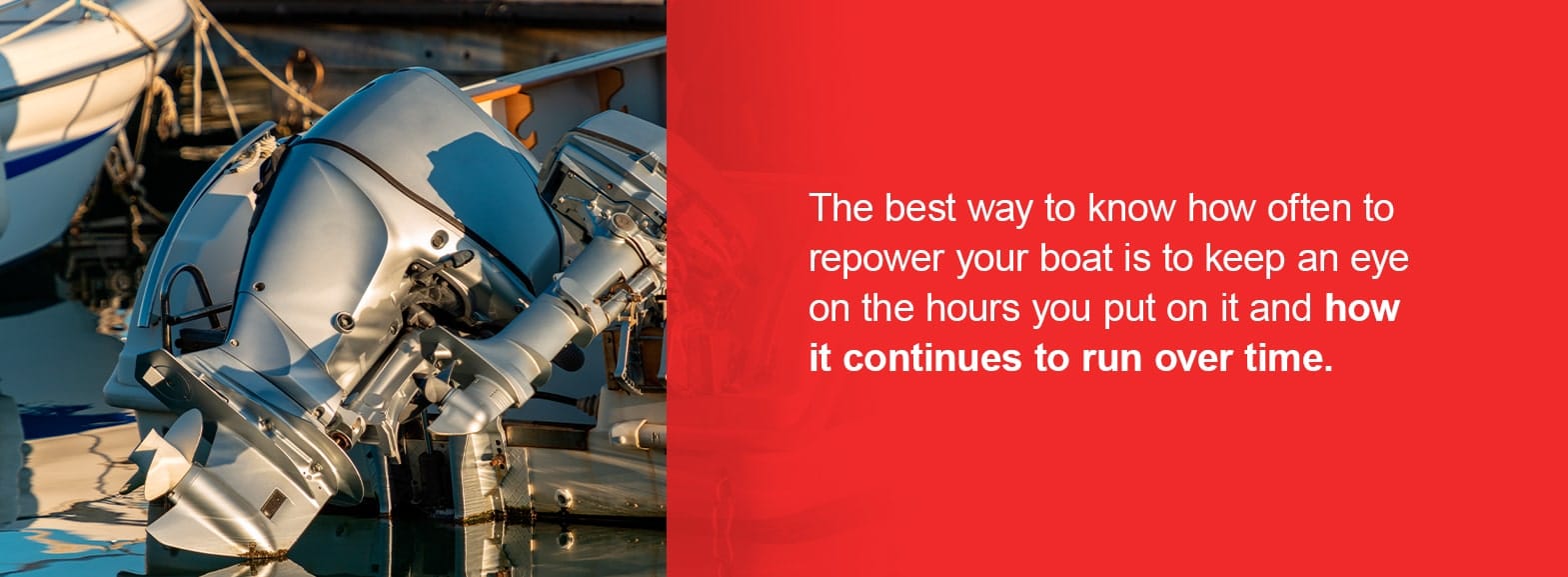
If you've bought a used boat, you'll likely need to repower it sooner rather than later because the motor will likely already have several hours on it. If the engine is well-maintained, you may be able to put up to 5,000 hours on it before repowering it.
However, most boat owners need to repower after 2,000 hours . While this may make it sound like you'll need to repower your boat often, for most boat owners who only use their boats seasonally, this could end up being 10 or more years.
The best way to know how often to repower your boat is to keep an eye on the hours you put on it and how it continues to run over time. If you notice it starting to run poorly, you may be looking at a repower sooner than that. Keep an eye on it and you'll know the best time to repower your boat.

In many cases, repowering is a more cost-efficient option for boat owners looking to upgrade. If your boat is still structurally sound but could use some more power, repowering may be a viable option. Luckily, there are financing options available whether you want to buy an engine to repower your current boat or decide to get a new boat altogether. If you're unsure of the best option for your wallet and your boat, consider having a service dealer give you a price estimate based on the type of boat and its condition.
Compare prices — if the cost of repowering is close to or exceeds the cost of buying a new boat, it probably won't end up being the right option. At that point, buying a new boat will be more reliable and may even have newer features you wouldn't be able to get installed on your old boat.
Learn About Boat Loans From My Financing USA
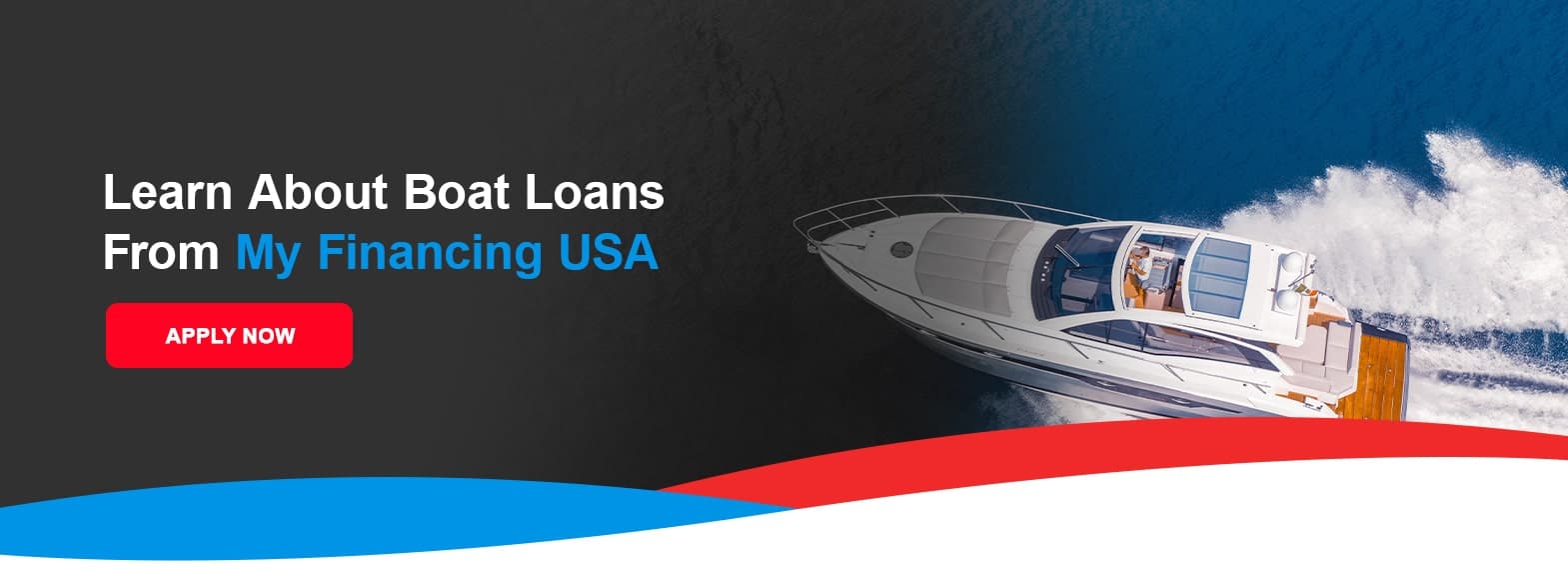
Whether you're repowering your current boat or looking to invest in a new one, you're likely looking for financing options. At My Financing USA, we can help you finance engines or a new boat entirely. We do the leg work for you when it comes to finding the best boat financing programs across the nation. We'll help you get pre-qualified and will only send you to one lender at a time so you can protect your credit in the process.
With an entirely online process, you can sign documents electronically and receive funds fast. With our help, you could get your financing within two to three days and start your repowering project sooner or buy the new boat you've been admiring. Our application process is simple, and you can fill out an application in minutes to get started.
Would you like more information? Contact our friendly team today!
Additional Resources on Boats:
- Boat Winterization Guide
- How to De-Winterize Your Boat
- Boat Maintenance: Everything You Need to Know
- Guide to Different Types of Boats
- How to Rent a Boat Slip
Related Blog Posts
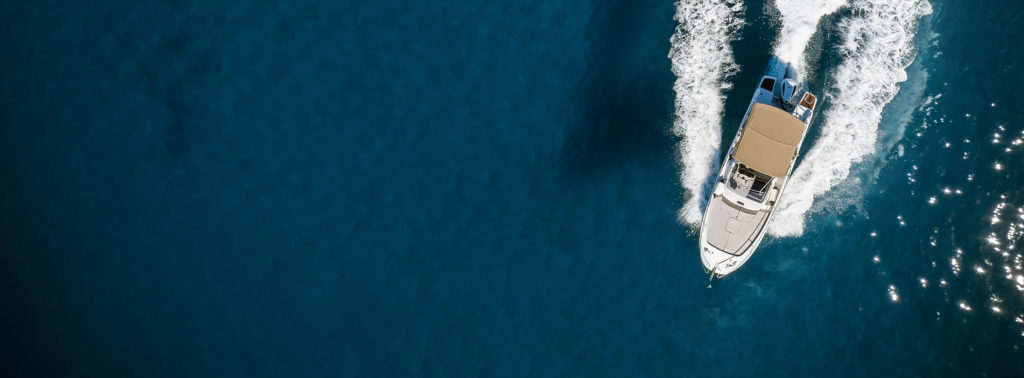
Best Places to Go Boating
Read Article

Guide to Buying a New Boat
Blog topics.
- Maintenance
- Refinancing
- Winterization
Learn More About Our Boat Loans
- E-News Signup
The Fisherman
Advanced Search
A Guide to Repowering With Outboards
The author provides a thorough and detailed guide covering all you need to know before moving ahead with a repowering project.
As many of you might have gleaned from reading my boat and motor review articles for the past four decades, if you don’t have the budget to purchase a new boat, the best alternative is to look for a quality boat brand that’s four to seven years old. If you can find one with potentially tired outboards that are coming off or just past their warranty period, you can likely negotiate a good deal on the boat’s final asking price and then consider purchasing fresh power to replicate the “almost new” boating experience, but at a fraction of the cost. Plus you can get a fresh five- to seven-year warranty on the new engines, protecting your investment and limiting any future unplanned “surprise” out-of-pocket costs.
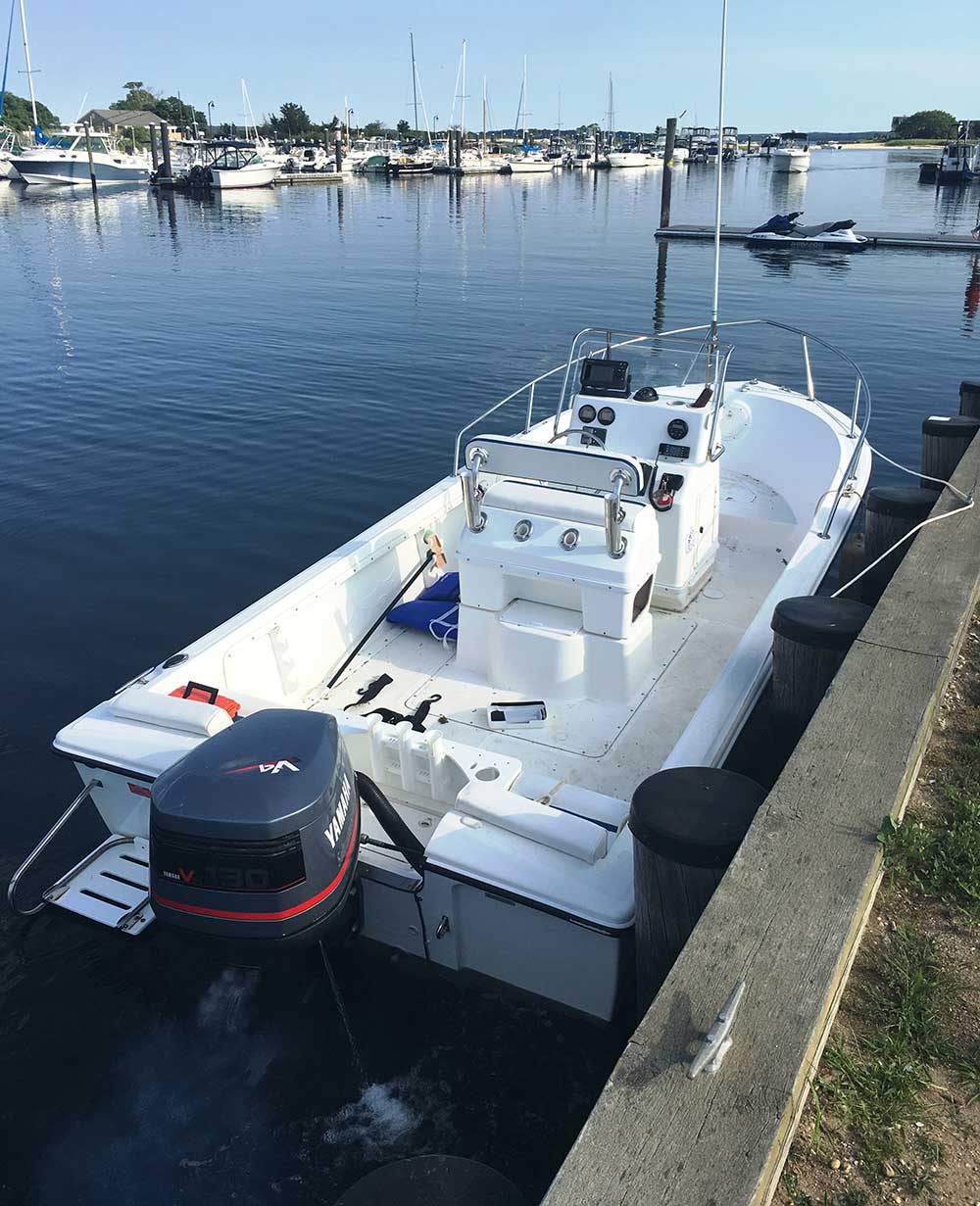
Personally, I have been involved with a total of 17 outboard repowering projects since the late 1980s, and I am currently managing number 18 as you read this. Having experienced both a number of smooth sailing and unplanned disastrous moments during the course of these repowering projects, I should have enough real world guidelines to create this repowering guideline from memory. When Fisherman readers reach out to me about the art and science of repowering, I usually suggest that they sit down and ask themselves some tough and thought-provoking questions, many of which are detailed in the following paragraphs.
However, to make this outboard repowering guide as informative as possible, I took the added step of reaching out to three of my local Long Island dealers who collectively manage over 100 repowering projects each season, just to get some truly professional advice. Special thanks to the good folks at Albertson Marine in Southold, Spellman’s Marine in Hampton Bays and Suffolk Marine in Babylon for sharing their expertise. They had plenty of great advice, so let’s get right into it.
Is Your Boat a Candidate for Repowering?
This is the big question that will determine the success or failure of your potential repowering project. As you ponder the final answer, be advised that this generic question can be broken down into a number of smaller queries. Many older boats are eliminated by a number of different factors when considering repowering, specifically: How old is the boat? What is the current physical state of the transom? (Are there any soft spots, water intrusion issues or rot?) What is the physical state of the rest of the hull and deck? What is the transom weight limitation of the powerplant? Where are the boat’s scupper locations when wet with the current engine and where might they be with the new powerplant? What is the horsepower limitation of the transom, as detailed on the boat’s safety/capacity label? Once you generate some real world answers to these questions and analyze the data, you will be in a much better position to determine if your planned repowering project is a go or no-go.
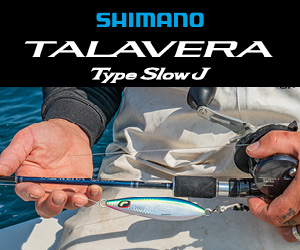
Basic Boating Equipment Compatibility Checklist
Once you have determined that it’s time to take the next step in the repowering process, be advised that the rest of the boat’s mechanical systems need to be in good working order before you continue. If not, you might have to replace certain systems like the mechanical throttle and shift cables; the control box; the steering system, which includes items like the helm, mechanical steering cable, hydraulic cylinder, hydraulic hoses and fittings, plus the steering helm itself and/or the steering wheel. Putting a new engine on the transom and using 15-year-old cables and an archaic steering system to control it is akin to putting old tires on a new car – it just doesn’t make any sense.
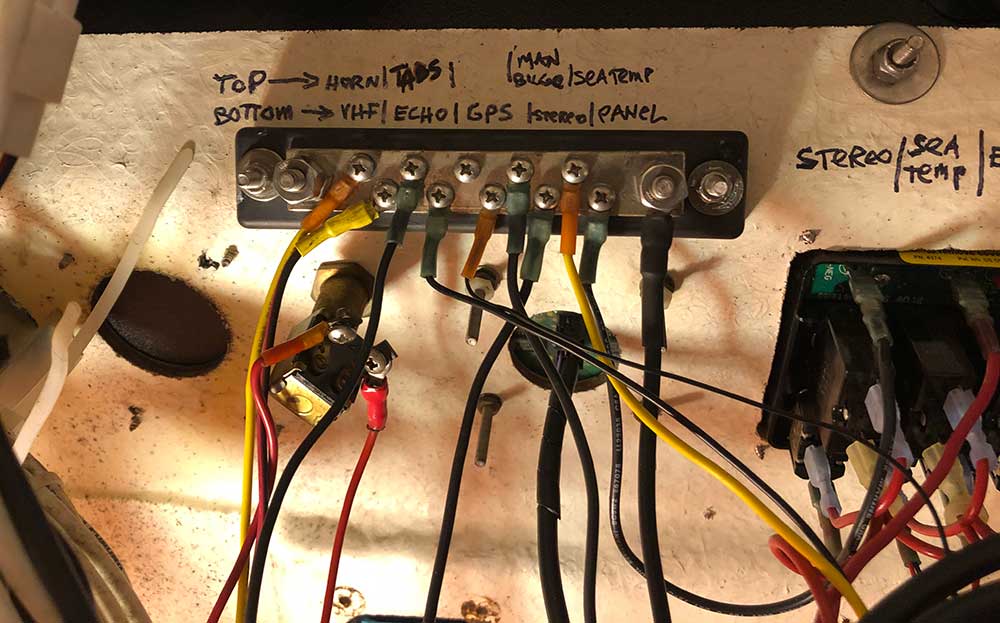
If you have an old single or dual cable steering system, you might want to upgrade to a hydraulic, tilting-helm unit. If you have an existing hydraulic helm unit, is your current cylinder compatible with the new engine? If not, that’s an added expense for the parts and labor that will increase your overall project cost. What about power steering, to assist your hydraulic steering unit? You’ll need to find a place to put this, plus that’s yet another added cost item. You get the picture, it’s wise to plan ahead to keep project surprises and cost over-runs to a minimum.
Yet another area of concern is your boat props. Depending on brand, gear ratios, material (S/S or aluminum), number of blades and the condition of what you currently have, you may or may not be able to use your existing propeller(s) on the new outboard. New stainless steel props are not cheap and will cost you anywhere in the $550-$750 range per unit, depending on the manufacturer. One of the things I like about Merc props is that you can run them on every brand of outboard with the right hub kit. They also feature a removable polymer FloTorque II hub design that ruptures on impact with anything solid (saving your prop blades) and can be easily changed in the field with a few basic tools in five minutes or less. I have a half dozen different Merc props that I use for my boat performance tests and they are all ready and anxiously waiting in the wings to spin their magic on my new 250 V8 to help me max out its performance.
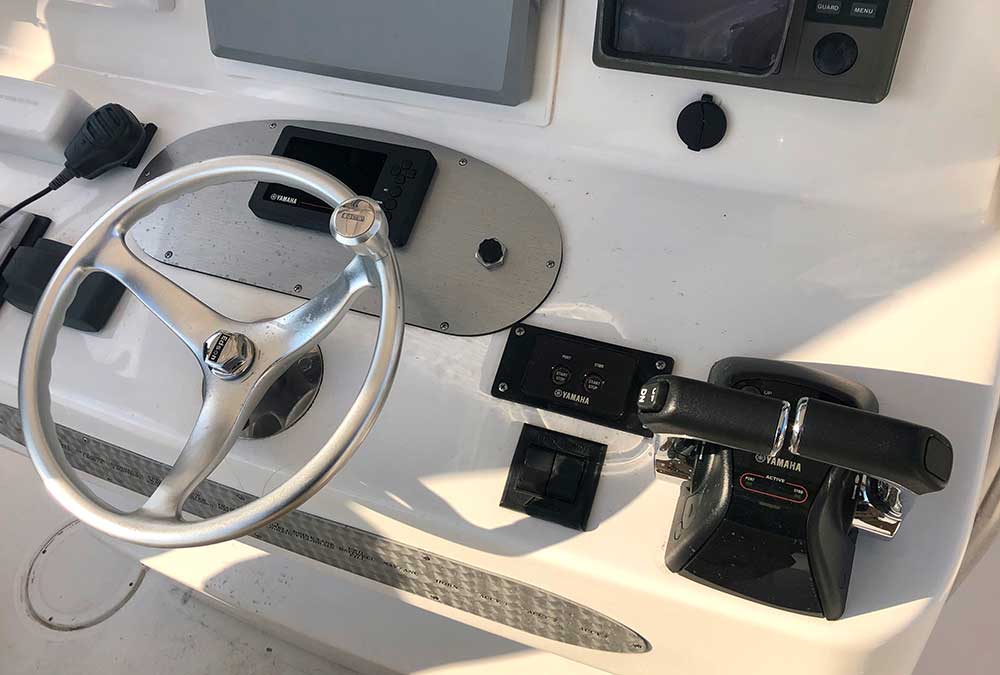
Do Your Batteries Have Enough Juice?
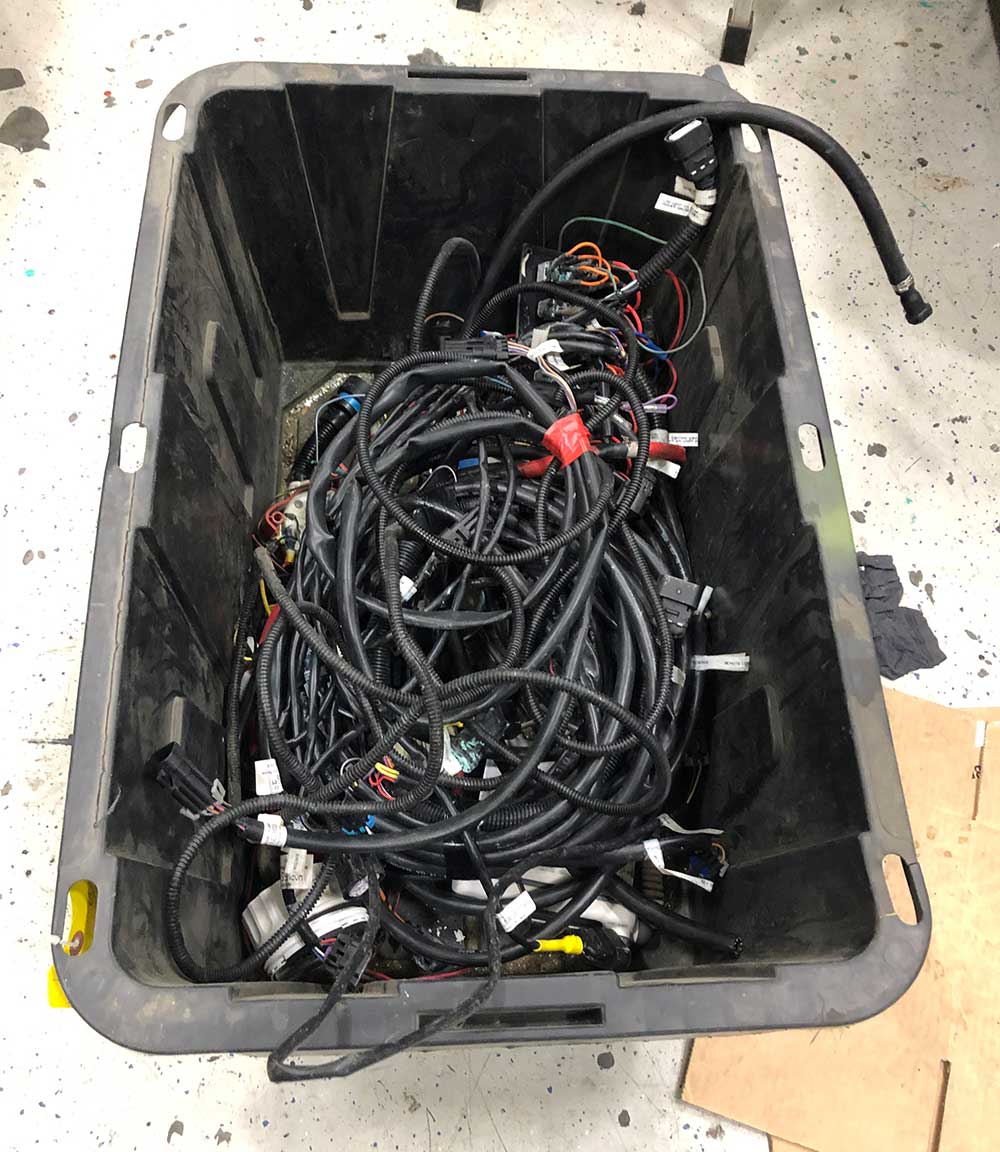
While it’s always a good idea to refresh your batteries when repowering your outboard(s) – remember that “old tires on a new car” analogy – your new engine might actually require something with added 12-volt capacity. This is especially true if you are going from a mechanical engine to a digital version, like I am doing with my current project of upgrading my 2006 EdgeWater 228cc to a Mercury 250 DTS (digital throttle & shift) V8 four-stroke. It’s important that you read the operations and installation manuals PRIOR to making any final decisions on battery replacement, to ensure that whatever it is you are getting, it meets and exceeds the standards that the new engine requires. Current engines require more juice for running their onboard computers and sensors, digital fuel injection and digital network systems, among other requirements, so be advised.
As a case in point, my EdgeWater 228cc’s current source of 12-volt power is delivered by a pair of Interstate “wet” Series-27 dual purpose cranking/deep cycle marine batteries, with 750 marine cranking amps and a minimum reserve capacity of 160 minutes at 25 amps. In contrast, according to my owner’s manual, my new 2020 Mercury 250 V8 FourStroke requires an AGM (absorbed glass mat) “dry” battery that is rated for 800 marine cranking amps and a minimum reserve capacity of 135 minutes at 25 amps. Bottom line, I am probably going to have to upgrade my batteries to the dry AGM type and might have to go with a slightly larger 31-series battery to get this done. It’s always better to have a little more juice than a little less. This is especially true when you are starting up your big outboard 30 to 40 miles offshore, after a day of wreck hunting or shark fishing and working your big screen electronics for most of the day. There is no sound quite like the outboard engine coughing to life when it’s time to head for home.
Is Your Fuel System Up to the Task?
It’s always a good idea to check all of the components in your fuel system when entertaining a repower project. These include the fuel lines from the tank to the fuel filter, the lines from the fuel filter to the engine, the vent lines, the fuel fill lines going to the tank from the deck fuel fill hardware, the seal on the fuel fill cap and most importantly, the fuel tank itself. It’s a general rule that an aluminum fuel tank will last approximately 20 years in the harsh marine environment. Nowadays, the next gen fuel tanks are either coal tar coated, painted with an epoxy primer, or manufactured from gasoline-resistant polymer, extending their useful lives out on the briny. But if your boat is more than five years old, there’s a good chance that it was made from anodized aluminum. My 1999 EdgeWater 185cc’s tank was fine, with no leaks. But if I had to change it tomorrow, the boat features a recessed gas tank hatch that can be removed to access the tank. That modular concept is still practiced by some top tier boat builders, but that number is dwindling with every passing model year. Why? It’s more work to build, fit, assemble and seal different fiberglass components compared to just making one part. But the problem is, once the tank goes bad, and it’s tucked below a one-piece fiberglass sole, you’ll have to take an electric saw to your cockpit and cut it out to pull the tank, creating a big mess and necessitating some expensive fiberglass repairs afterwards. I upgraded all of my critical fuel lines and installed a stainless steel framed fuel filter when I purchased my EdgeWater 228cc five years ago, so that should be one less thing to worry about when my dealer installs the new Merc 250 in the coming weeks.
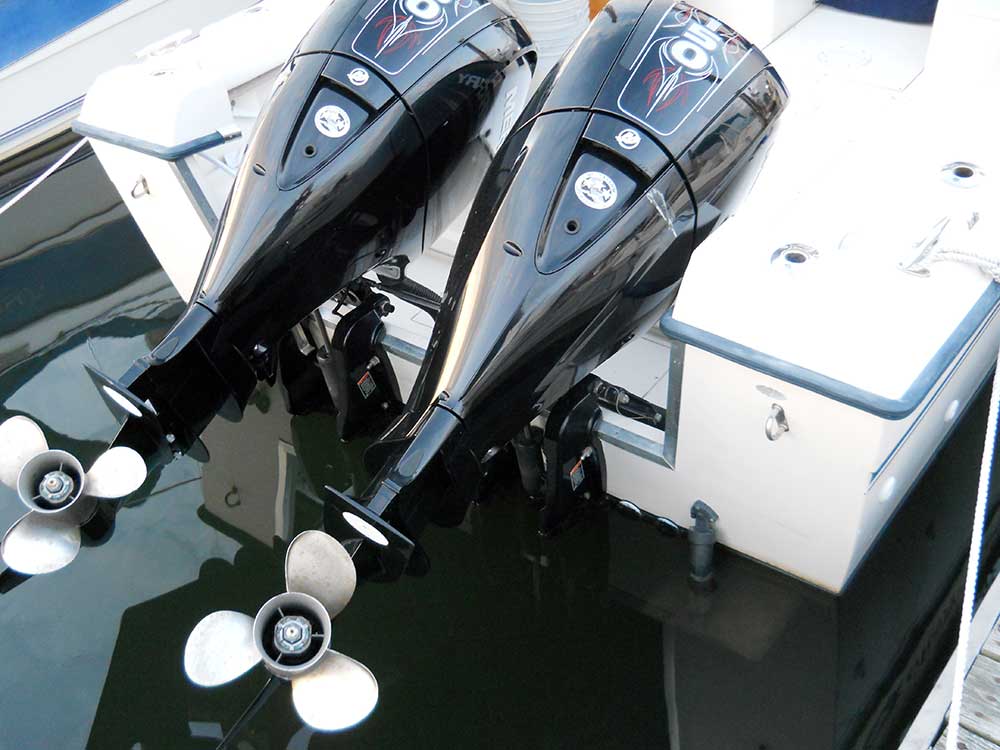
How’s Your Boat Wiring?
Both of my current EdgeWaters were a tale of two disparate worlds. The original factory wiring was harnessed, loomed and color-coded, with a detailed explanation of each wire’s function and destination point in the boat operator’s manual. This was not the case for all of the accessories that both of the original owners had added on after the fact. I wound up ripping out all of the aftermarket wiring, keeping the original EdgeWater wiring runs intact, but also added new Blue Sea 12-volt circuit breaker accessary panels that drive all of my critical electronics. I wasn’t thrilled with the original panels, which are now 21 and 14 years old respectively and at some point in the next year, will probably replace the existing accessory panels and breakers with completely new equipment. There are a number of vendors that will replicate your original panels, complete with function descriptions and boat brand logos, but more on that in a later article.
I am installing a new 6-gang Blue Sea Weatherdeck accessory panel on my EdgeWater 228cc to replace the 4-gang panel I installed on the boat when I bought her back in 2015. This panel will control my Simrad GO12 MFD, a Si-Tex Sea Temp Gauge, a Standard Horizon VHF, a ProSpec sound system, my new Mercury VesselView engine info gauge, plus a Furuno RD-33 GPS navigator. All of my super-critical info is on a new, high-quality circuit breaker panel that I will wire and route myself. The benefit of this is that if something goes wrong with my electronics offshore, I’m the one who installed it, rigged it and knows where each wire goes and what it does. Many of the professionals that I interviewed for this article recommended to leave the engine wiring sacrosanct and not tap anything electrically off of the gauges or the key switch. If you need additional wiring hookups for accessories or networks, install a dedicated power bus or attach it to a clean breaker position on an existing accessory panel.
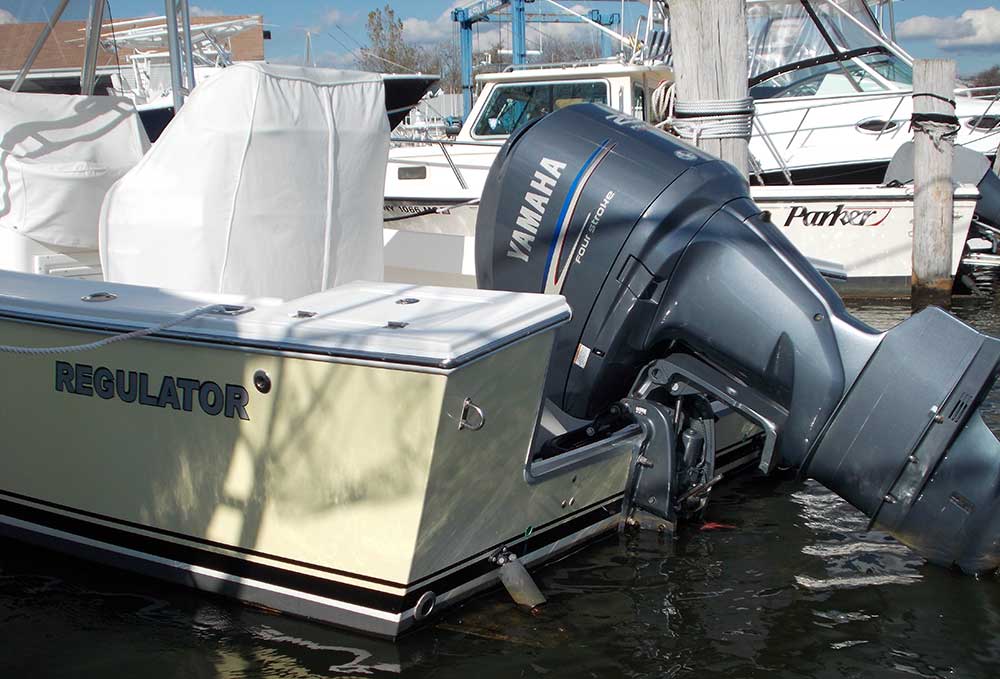
Analog Engine Information in a Digital World
One of the upgrades you will need to consider when repowering is what to do with your existing engine support gauges? Twin, triple and quad engine setups used to require at least a pair of instruments for each engine, but no longer. Yamaha introduced their series of keypad 6-inch and touchscreen 7-inch multi-function displays that totally solved this problem, concentrating all of this electronic info into one or two gauges and freeing up a significant amount of dash space. Their Command Link Plus series now takes networked NEMA2000 info and shares it with every MFD that is connected to the electronic trunk. I am losing two 3-3/8-inch gauges from my 228 EdgeWater’s old Yamaha F225’s instrument array (tach and speedo) and replacing them with a single 5-inch VesselView gauge (They also currently offer 7-inch, 9-inch and 12-inch displays.) from Mercury for the new 250 DTS (digital throttle & shift) V8 outboard that is in the process of getting rigged as you read this. This allowed me to install a larger accessory panel and consolidate a bunch of the vessel wiring into the new network. It also enables me to display some of that engine data on my GO12’s screen via the network if I so desire. The bottom line is this. If you are going from a mechanical/analog engine to a more current mechanical engine, you might be able to use som e of the old gauges and you might not. If you need digital info, the gauges will need to be changed. If you are evolving from a mechanical engine to an electric/digital platform, the gauges will probably need to be replaced by a multi-function display. You will also need to install a new throttle control box (with additional wiring harnesses required) and a key switch, add a NEMA2000 network, along with a few other system links that will allow seamless communications between all of these different parts. Translated – be sure to add the cost of these extra items to your repowering budget, plus the labor to install them.
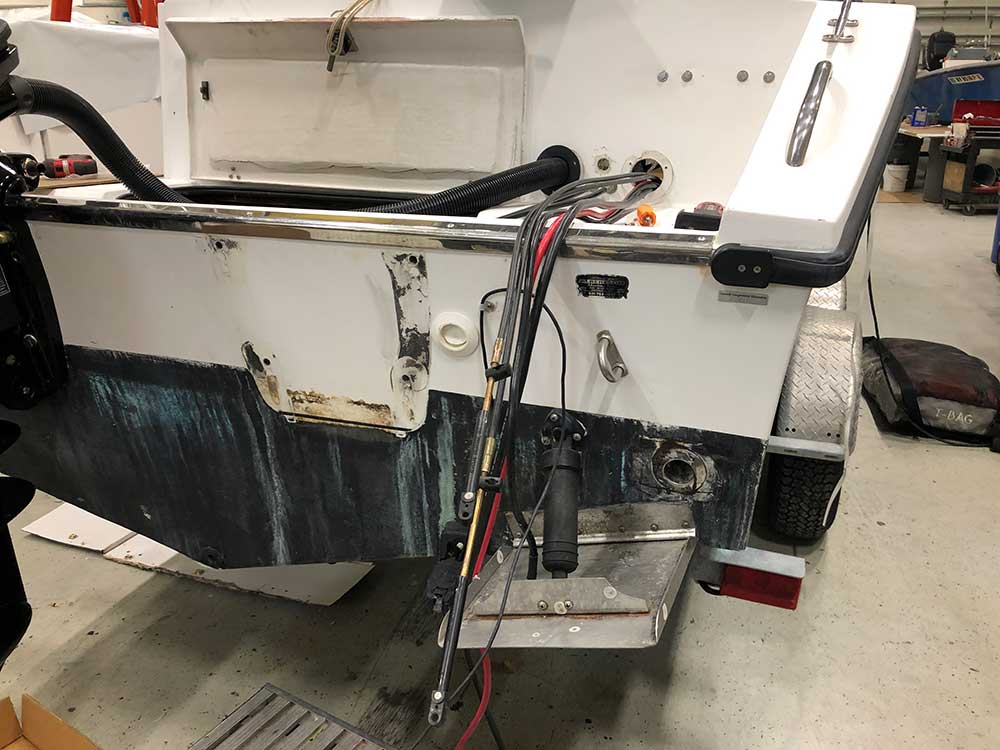
How Long Does It Take?
This is one of the “magic” questions of the repowering process, since ultimately, the amount of time that the dealer/installer spends on your engine replacement will be multiplied by an hourly rate that will be in the $125-$150/hour range, depending on where you call home. When trying to prognosticate the amount of time it takes to derig and install a new outboard engine, one of the dealers that I spoke with had a simple rule. One eight-hour day to take the old engine and wiring off, one day to install the new engine and one day out on the water to break it in and test it out with a variety of props. That’s 24 hours of time. Another dealer mentioned that if a boat owner was going from a mechanical engine from brand A to a newer mechanical model from the same manufacturer, this process could probably be done in half that time, typically 10 to 12 hours. If the boat owner were to go from a mechanical engine to a digital engine from the same manufacturer, the timeframe increases to the 15-
to 20-hour benchmark, due to the deletion and addition of a greater amount of accessory gear (electric control box and key switch, networks, new gauges, etc.). If you’re going from brand X to brand Y in your engine swap-out, you’ll probably have to add four to five hours of extra time to every one of these scenarios. Predictably, twin, triple and quad engine installations add more time to the process. You really need to get a good handle on the labor/installation end of the project to be able to predict the true bottom line cost.
There’s a good chance that your engines are worth something on the used market, especially if they are in good running condition. I was able to sell my used Yamaha F225 outboard that was original equipment on my EW 228cc in only a few days. Same was true for repurposing the Yamaha S130 two-stroke that was on the EW 185cc. When it comes to derigging your boat prior to installing a new outboard, anything that you can do yourself will save dealer rigging time and money. Be advised that some of the new gear might not fit in the old holes, which will require field modifications by either yourself or your installer/dealer, once again adding to the bottom line project cost.
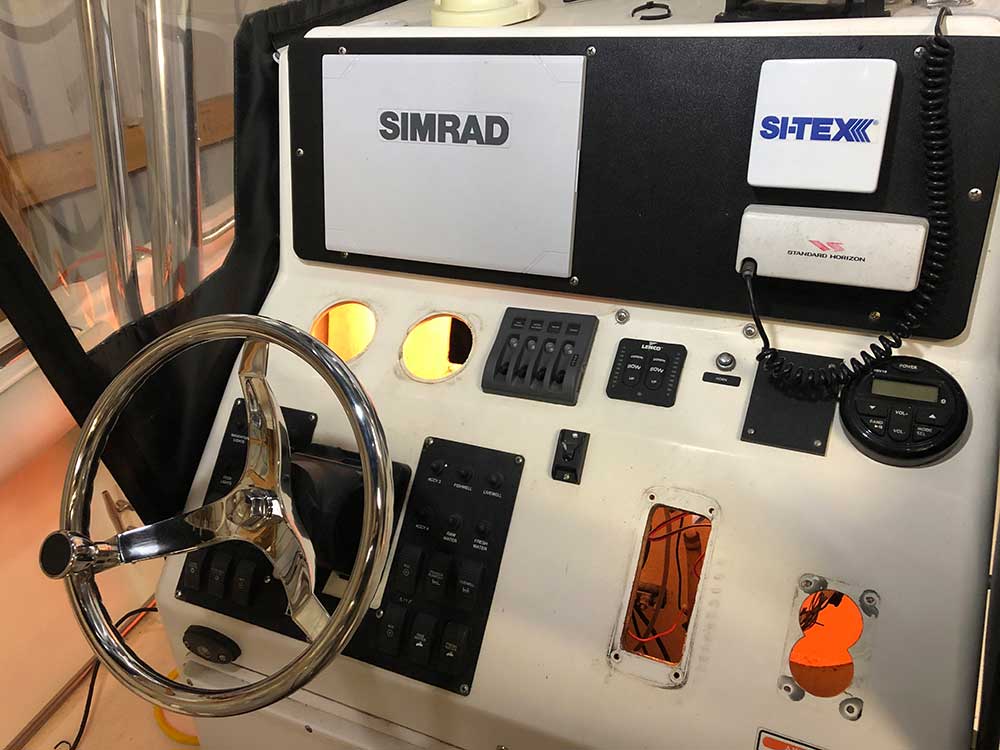
Some Final Thoughts
If there’s anything that I’ve learned with the events that my family has endured over the past few years, it’s that life is short and things can change in the blink of an eye. One of my wife’s favorite expressions is, “eat the cake, buy the shoes, and go on that vacation.” It is precisely this logic that compelled me to get that new Merc digital 250 V8 for my 14-year-old EdgeWater 228cc. I’ll let you know how it all works out, but I am ready to get her wet and catch some fish this season! If you have any engine repowering questions, reach out to me at [email protected] .
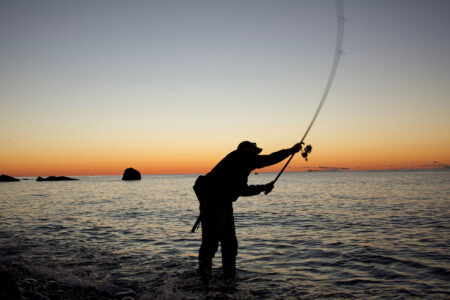
Surf: Know Thy Stick
Know your rod and surfcasting consistency will follow.
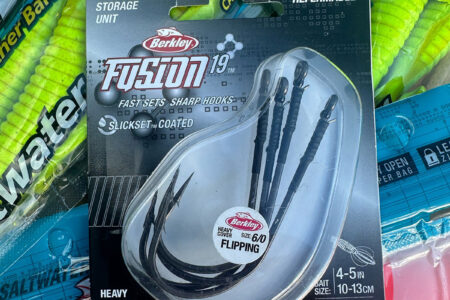
Inshore: Staying Hooked Up
Choosing the right hook for your soft plastic fluke offerings.

Freshwater: Steep Shoreline Senkos
Hit ‘em hard now, before the crowds, pressure and summer vegetation.

Authorised Suzuki Sales, Fitment & Service Centre
News: Boating
Newly repowered: check out the new outboards we fitted to these boats.

All our real and recent boat repowers (WATCH). Plus: Repower options, the boat repower calculator, what repowering a boat means and how to calculate your engine replacement cost
15 June 2019
What does it mean to repower your boat? Well, it’s basically putting new engines on, usually with more power and smarter tech. Fitting new outboards is one of the fastest, easiest and most cost-effective ways to give your boat more speed, performance, power and lower fuel costs. And there are loads of awesome options when it comes to a boat repower.
A repower is as easy as taking a look at the available outboards and then speaking to our sales guys and technicians in our Suzuki workshop , deciding on the repower option that’s best for your boat and your budget, and then booking your slot to have the new motors fitted. They’re brand new, fully tested, fitted and certified, plus you get a new warranty on the new outboards too.
Repowering your boats is probably one of the most satisfying ways to increase power on your boat without breaking the bank. See what the owners of these recently repowered boats have to say:
NEW BOAT REPOWERS
Jubal repower: upgrade to twin suzuki df100s.
More responsive, fuel savvy and a smoother ride. WATCH here:
New Suzuki DF100s on Ace Cat 555 Super stable steering. Lightest in its class. And so much more oomph. Check out the twin DF100s we fitted to Charles Wright's 5.5m Ace Cat. Now you're gonna do a lot of lekker deeper fishing, Charles and family! We'll show you more on this project soon. #GetNautiIn the meantime, discover the Suzuki DF100 here: https://nautitechsuzuki.com/outboards/df100b/ Posted by Nauti-Tech Suzuki on Monday, 2 September 2019
“You have to love the performance on these Suzuki four strokes, they’ve just got a bit more grunt in them. We took Jubal with the new motors out for the first time last Saturday and, boy, do they run well. I had to keep playing on that edge between too much and just having fun out on the water,” says Charles Wright, owner of the recently repowered Jubal .
5.5-Metre Ace Cat | Prev: 90hp 2 strokes | Repowered: 2 x New Suzuki DF100
ZEE KOETS REPOWER: UPGRADE TO TWO SUZUKI DF80S
Better performance for less fuel, more torque and superior after-sales service that seals the deal. WATCH:
Repower: DF80s on a 5-metre powered cat Instant acceleration and a finely tuned gear ratio. Doing a PDI on two new Suzuki DF80s on a 5.7-metre powered cat that loves going after tuna. Get the full sotry on the repower here: https://nautitechsuzuki.com/zee-koets/ #GetNauti Posted by Nauti-Tech Suzuki on Thursday, 6 June 2019
“I had two Suzuki 70s on before, and of course they were great motors, but you can feel the difference with the new Suzuki DF80s . I can now run at 1000rpm and get to the same speed I’d normally have to up to higher revs for. It definitely uses less fuel now, and the power configuration is just ideal for my boat,” says Emile Coetzee, owner of newly repowered Zee Koets .

UKWABELANA REPOWER: UPGRADE TO TWO SUZUKI DF325S
More power, less fuel and greatly improved functionality on this incredibly hard-working 13-metre marine research vessel. WATCH:
The best things come in twos. Dual louvre, dual prop, dual injection and the efficiency of a 300hp packed into the power of a 325. Check out the two DF325s we fitted to a 13-metre powered cat research vessel for the South African Institute for Aquatic Biodiversity, Makhanda, Eastern Cape recently. Read all about it here: https://nautitechsuzuki.com/ukwabelana/. Plus: More on the Suzuki DF325 here: https://nautitechsuzuki.com/outboards/df325a/ #GetNauti Posted by Nauti-Tech Suzuki on Thursday, 23 May 2019
“The new outboards are just awesome, the boat’s got more life now, so much more oomph. We used to have 300hp motors on, and getting the new Suzuki DF325s , well, that’s definitely a step up. It’s like the boat’s just come to life. That dual prop and better systems just mean she has more power now,” says Koos Smith, skipper of the newly repowered uKwabelana .

13-Metre Powered Cat | Prev: 300hp outboards | Repower: 2 x New Suzuki DF325
ABOUT BOAT REPOWERS
What are my repower options.
Well, you can start by checking out the available outboards . And then it’s always good to chat with sales guys and technicians because you want to be sure that you select the right outboards for your repower. You want to take your boat’s size and max engine weight into consideration, to be sure you select the right option. And then also ensure the steering and all systems are compatible. For the best advice, contact Nauti-Tech Suzuki here .

OUTBOARD REPOWER CALCULATOR
To get a general idea of how much power you need for your boat repower, you can use your boat’s weight as a guide. Convert your boat’s weigh into pounds, so a 2.2-ton boat becomes a 5000 pound. Normally, for a fairly average performing boat, you need about one horsepower (hp) minimum for every 25–40 pounds of weight (the range is wide because of all the different types and brands of boats you get).
If you take 5000 and divide it by 200, you get 25 pounds per horsepower. And, 5000 divided by 125 is 40. So you can get away with 125hp–200hp on that boat. But the lower that number is, the better your boat will perform. Try dividing 5000 by 300 and you’ll get 16.6, which is starting to become nice and fast. Divide it by 400 and you’re building a boat you’re gonna love.

Now, if you’re fitting two engines, remember that you’ll divide that horsepower by two. So, our super 400hp becomes two 200hp outboards. And then it becomes important to keep each individual outboard’s weight in mind. The two outboards together shouldn’t weigh more than your boat manufacturer’s max spec for your boat, so you’ll have to play with different configurations until you find the one that gives you the best power-to-weight ratio and works for your pocket. Fortunately, the technicians in our workshop will help you determine your best options.
Get the inside track on how to choose an outboard for your boat .
CALCULATING BOAT ENGINE REPLACEMENT COST
With outboard motors, it’s fairly simple. Your costs are the price of the new outboard(s), plus labour, fitment and testing. Now, it’s important to take into account the systems and steering, because those need to be compatible, otherwise, they’ll need to be replaced, which can add to the costs.

WHAT’S THE BEST OUTBOARD ON THE MARKET?
Now, we’re not going to tell you Suzuki is the best. Make up your mind for yourself: Suzuki is the most awarded outboards manufacturer in the world, having won 8 National Marine Manufacturers Awards (NMMA) for Innovation since 2003, plus two more awards in the 1990s. Check out the list of Suzuki awards .
Suzuki is currently the best-selling outboard in South Africa. Perhaps because we offer great value for money, excellent after-sales service, advanced tech like Suzuki Lean Burn that boosts your boat fuel economy and performance, and every Suzuki outboard also doubles as a trolling motor .

But, when it comes to repowering your boat, it’s all about what really works for you.
NEED A BOAT REPOWER?
Check out our Suzuki outboards and enquire about boat repowers .
Did you know we also do complete boat refurbs? Check out the before and after on Line-Breaker . And y ou can also browse pre-owned boats, outboards and accessories among our used boats .
Discover 7 BoatPro reasons to start boating .
And, it’s official: See why Suzuki is the No 1 Best-Selling Outboard .

PLUS: CHECK OUT THIS NEW LAUNCH
We’ve just launched Jan Hendrik Hattingh’s new CarryCat 900, the Carry On 2 .

Plus: What happens when you fit two 140s on a 6.7-metre boat specced for max 115? Find out with recently launched brand-new boat Seadation .
Also check out Robin Vermaak’s all-new CarryCat 760 game fisher, Piromero .

Plus: See all our custom-built new boats and all our favourite new launches under our full collective post on our boats .

THE PURSUIT OF AWESOME
Legend also has it that CarryCats and every other boat runs better under Suzuki power. Discover it for yourself among these Suzuki outboards .

BUILT FOR FISHING
Legend has it that it’s more fun fishing in a CarryCat. So tell your friends who might not know yet to check out the little-big CarryCat 670 , the next-level CarryCat 740 and the all-round great fisher CarryCat 760 .

Discover more specs, options and configurations for bass boats, riverboats and ski boats under our section on new boats .
BE THE FIRST TO KNOW
To ensure you always get first dibs on the latest deals and be the first to know about new, events and special offers by joining the Nauti-Tech Suzuki Facebook community and signing up for our newsletter .
— Need to refurbish, refit and revive your boat? Take a peek inside our award-winning Suzuki Marine workshop .
READY TO #GETNAUTI?

IMAGES
VIDEO
COMMENTS
repower. Many sailboats built two decades ago or earlier still have plenty of life left in them. But their engines may not. Grey Marine, Palmer, Perkins, Buhk, Universal, Pathfinder, Faryman—these once-common names in marine propulsion are all but gone from newer boats. Many of these engines were designed as truck or tractor motors, then ...
SBO Weather and Forecasting Forum Jim & John. Oct 22, 2014. 21,195. CAL 35 Cruiser #21 moored EVERETT WA. Jul 16, 2021. #4. Guan said: I'm thinking of going this route. It is not about the costs or the install, or the improvements in less boat weight, or even more speed, it really is the how you, and where you plan to cruise that helps to ...
While Elco has offered modern electric-propelled launches since 1987 and inboard repower options since 2009, its newest inboard motors are one-third smaller and half the weight of previous models, illustrating industry trends. Torqeedo and, recently, ePropulsion also offer powerful, light inboard motors for either repower or OEM installation.
Repower your boat because you plan to keep it and reap the benefits of the new engine yourself. The value of your boat will certainly increase with a new engine, but rarely enough to recoup the costs immediately if you are only repowering with the intent to sell. The same is generally true if you convert from gas to diesel. The boat's value
Repower with YANMAR 6LFs. Certified YANMAR dealer Motonáutica Balear, Mallorca, completes the installation of two YANMAR 6LF530 diesel engines on Magnum Marine 40 motorboat Adriana to raise performance to a new level. Repowering with a new, technologically advanced YANMAR engine will instantly breathe new life into your boat.
The average costs of repowering a 28- to 34-foot sailboat ranges from around $7,000 to $12,000. This doesn't allow for V-drive transmissions, which always add to the labor cost because of the extra time involved. Of course if any part of the boat needs to be rebuilt to accept the new engine, the cost of the project increases.
Choosing the correct engine to repower your sailboat depends upon several different criteria. Utilize the Beta Marine experts that are ready to help. (252) 249-2473. Toll Free: (877) 227-2473 ... Instrument Panel Options; Alternator Options; Custom Engine Mounts; Saildrives. Saildrives (14 - 48 HP) Beta 14 Saildrive; Beta 16 Saildrive; Beta ...
Download Our Repower Guide for FREE! Repowering your boat is a major decision and there are several things to consider. We've collected some important information to help guide you through this decision and process. Connect with a certified YANMAR dealer or distributor when you are ready to make the next steps in your repower project ...
With a new Mercury outboard, you can enhance your boat's capabilities with the backing of a full Mercury Limited Warranty. We even offer Mercury Repower Financing so you can finance the entire repower package - including rigging, gauges and installation - with low rates and low monthly payments.
Yanmar, in their GM series for auxiliaries, have three control panels of varying sizes and options. Repowering a boat from a gasoline engine to diesel power needs extra consideration. Diesel engines of equivalent horsepower are usually physically larger than their gasoline counterparts. You may find, however, that the Atomic 4 in your boat has ...
The boat will run quiet as a ghost under power. The physical install should be very simple. ... There are several transmission options and gear ratio's available (including Saildrive). I'll be using the 7 degree down angle, with a 2:33 ratio. ... I have 2800 hours on my engine and am considering repower. JamesG161. Feb 14, 2014 7,446 Hunter 430 ...
Jay Rickles. Jul 13, 2001. #12. re engine. Don't know about an outboard option, but I had to put a new engine in my 1989 Catalina 30. I had a Universal 23hp and the replacement was a Universal 27hp. I had to redo some of the exhaust fitings to the water lock as the engine as been redesigned as is usually the case on the older boats.
The need to be within these physical parameters will likely help you eliminate several options. This will make it easier to choose the right repower solution. Partner with the right company to repower your boat. Repowering a boat is easier said than done. There are lots of parameters covered above to work with while repowering a boat.
4. Improve Fuel Economy. We probably don't need to remind you that gas prices are increasing. However, newer engines allow you to spend less money on gas or fuel. 5. Better for the Environment. When repowering your boat, you can upgrade to an engine that uses less fuel and meets the current carbon pollution rules.
Technology. • Digital Throttle & Shift (Optional on V-8 MPI engines) • Smartcraft Digital Technology (MPI Engines) • Engine Guardian/or Alarm System. FEATURES AND BENEFITS OF A MERCRUISER DRIVE. • Power Trim XD - Maintains Boat Control in an Emergency. • Flo-Torq® II - Propeller hub saves drive after striking an object.
Repower Your Boat Guide. February 4, 2020by Capt. John N. Raguso. You love your boat. It has taken years to get it outfitted and made as fishing efficient as possible, but your outboards are getting long on hours and you need to know those engines will get you home from the blue water trouble free. Repowering provides the comfort that having ...
Boat Repower Options and Considerations Repowering your boat is an opportunity to make necessary changes, though not every change will be beneficial to the way your boat runs. Repowering a boat is more than just installing a new engine — there are numerous aspects and different options for each aspect that you should consider.
A Guide to Repowering With Outboards. March 2020by Capt. John N. Raguso. The author provides a thorough and detailed guide covering all you need to know before moving ahead with a repowering project. As many of you might have gleaned from reading my boat and motor review articles for the past four decades, if you don't have the budget to ...
Our mobile service can bring our boatyard right to your boat. MarineMax is ready to provide for all your service needs now, as well as years from now! Extend the life of your boat engine with our repower services. Whether you need more horsepower or are looking to make your engine more fuel efficient, our skilled technicians are ready to help ...
Normally, for a fairly average performing boat, you need about one horsepower (hp) minimum for every 25-40 pounds of weight (the range is wide because of all the different types and brands of boats you get). If you take 5000 and divide it by 200, you get 25 pounds per horsepower. And, 5000 divided by 125 is 40.
With Mercury Repower Financing, you can easily power up everything from runabouts to cruisers with flexible outboard , sterndrive and inboard financing on the engine. You can also choose to finance the entire engine package (rigging, gauges, controls and labor). Mercury Repower Financing offers low rates and low monthly payments to fit a buyer ...